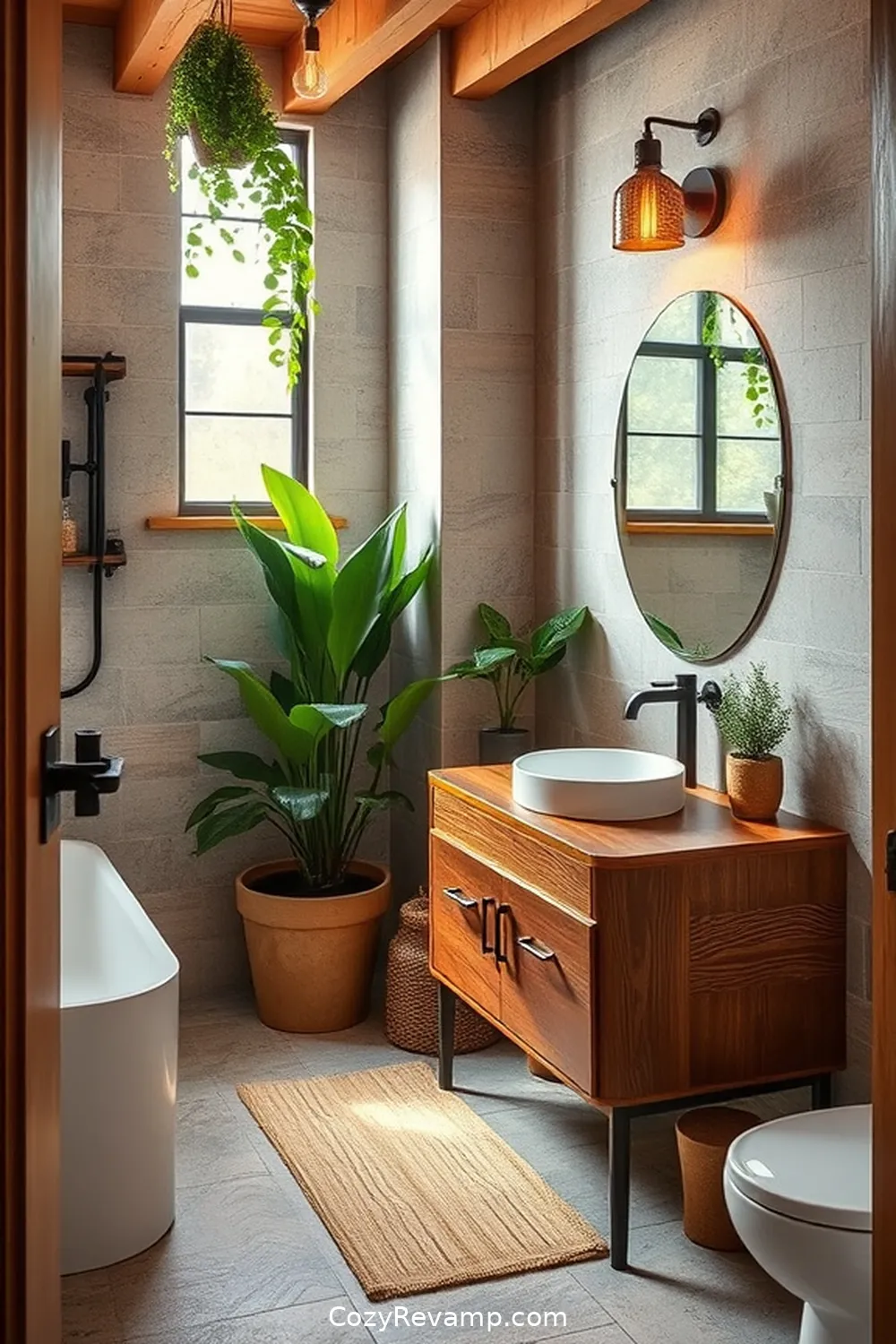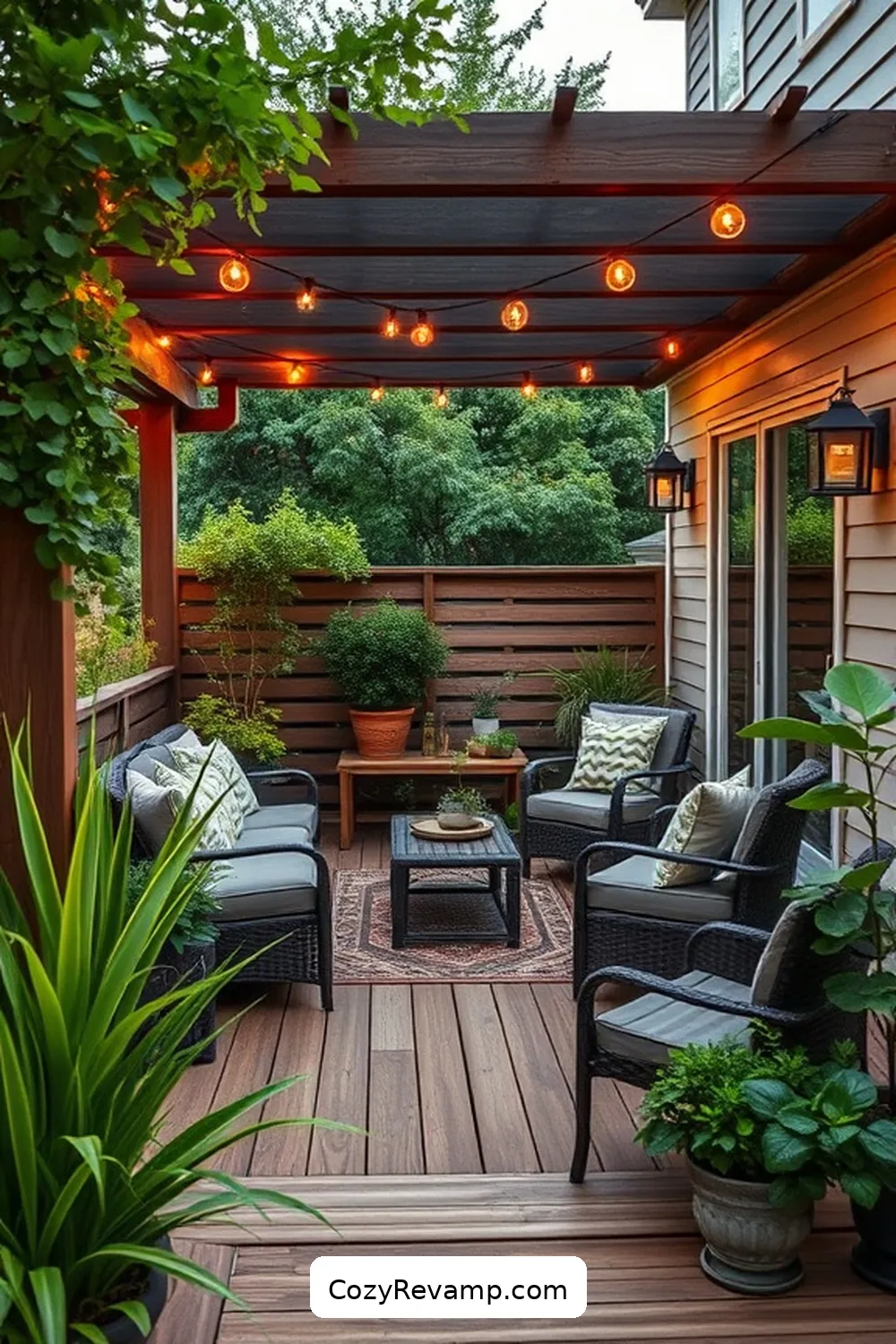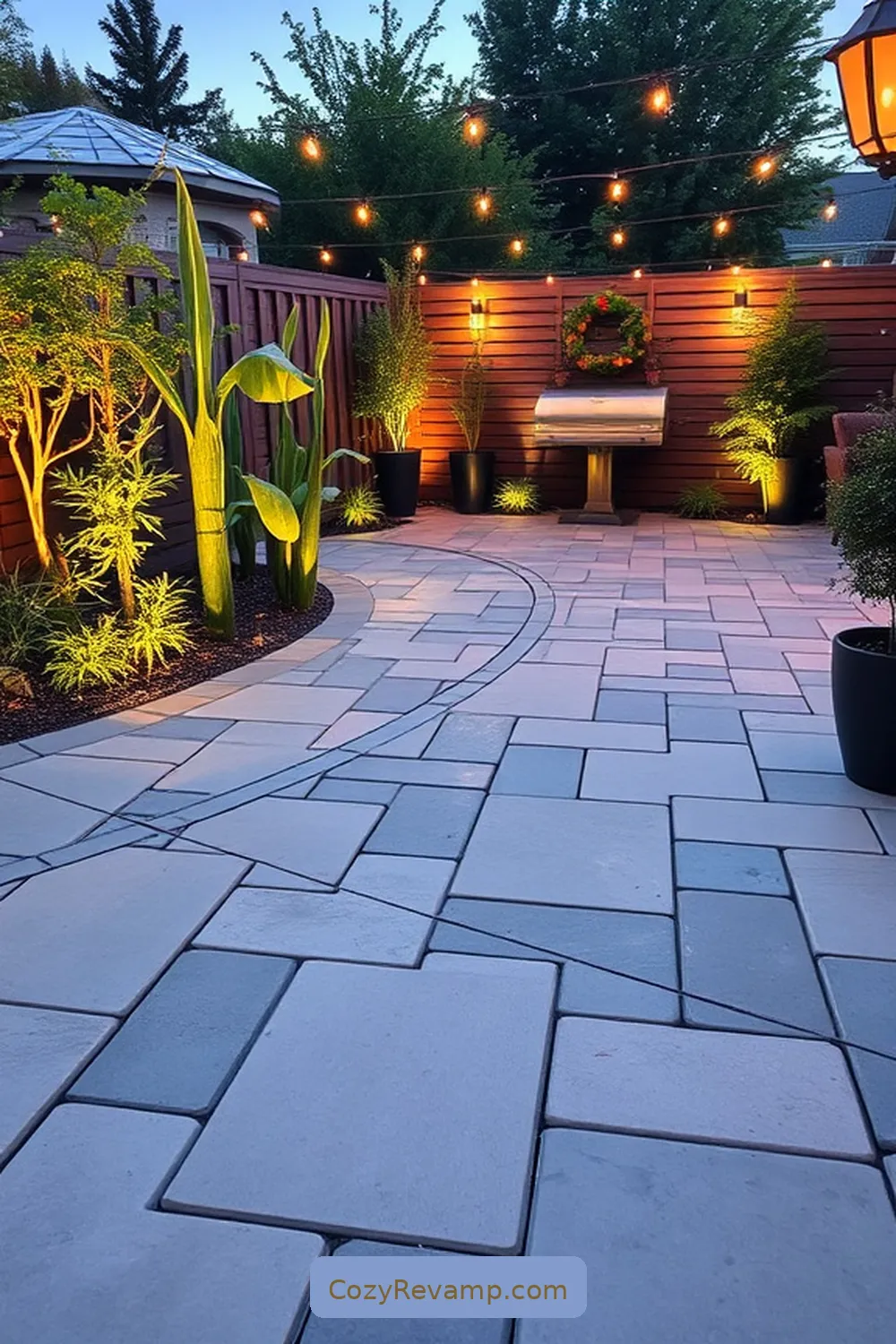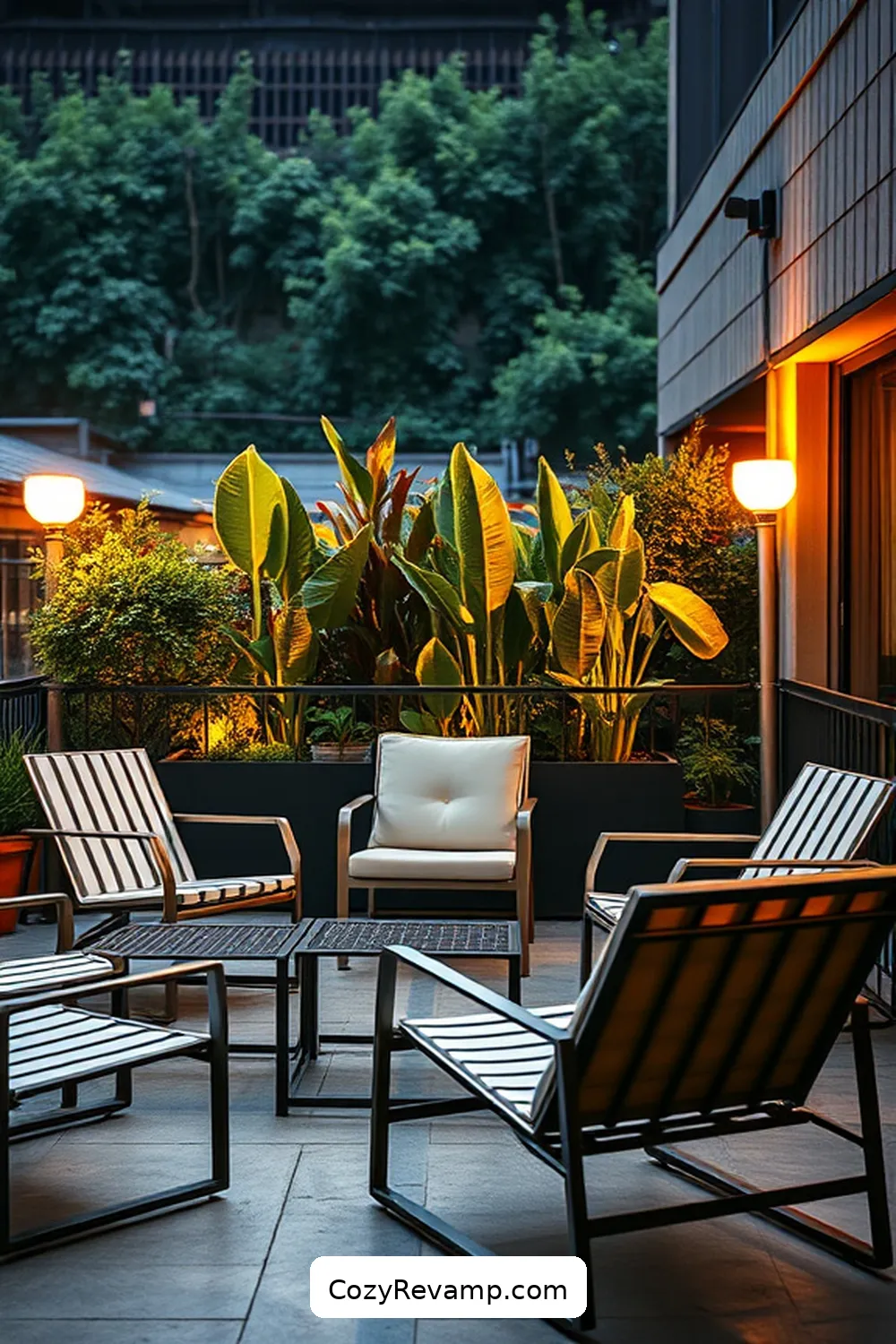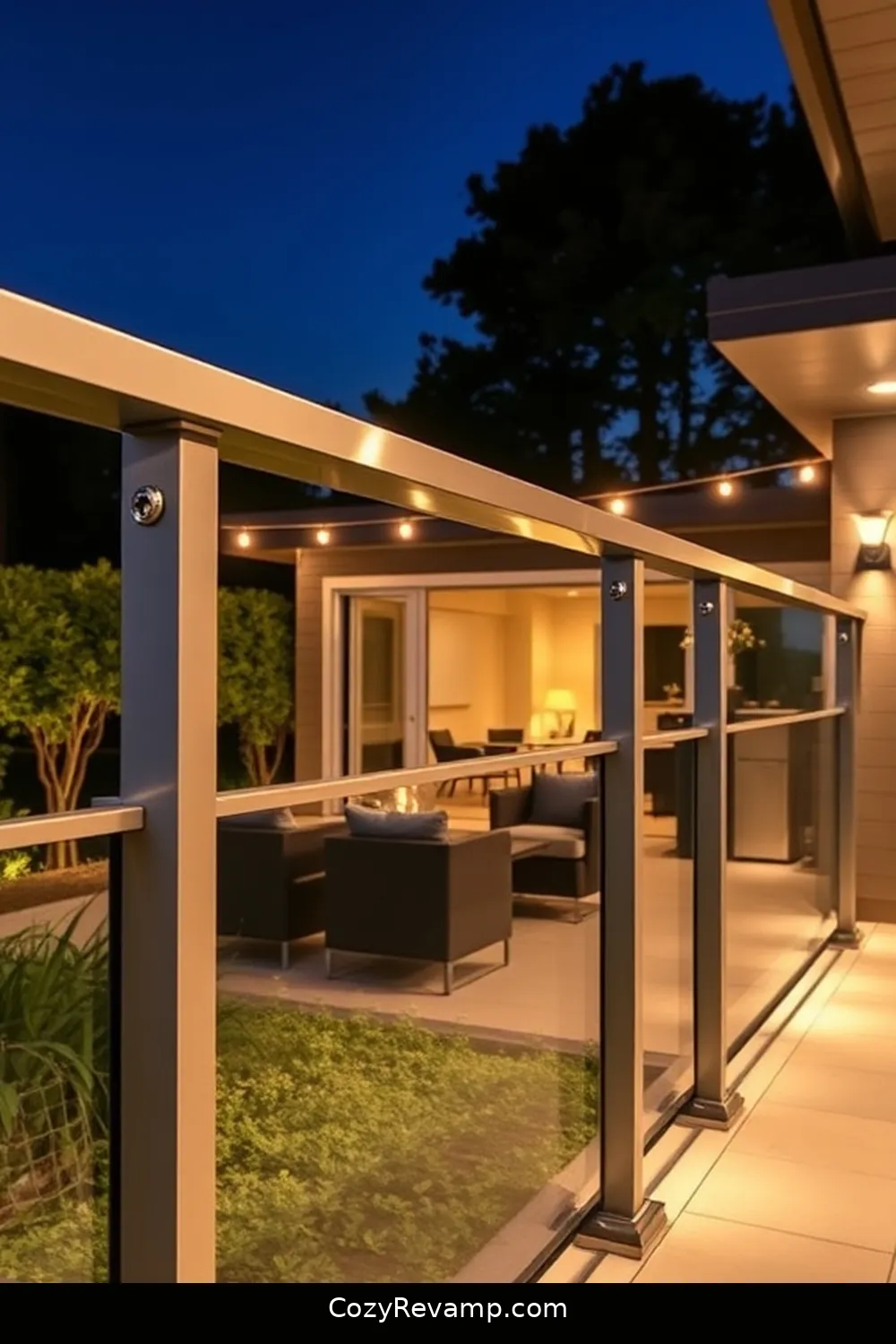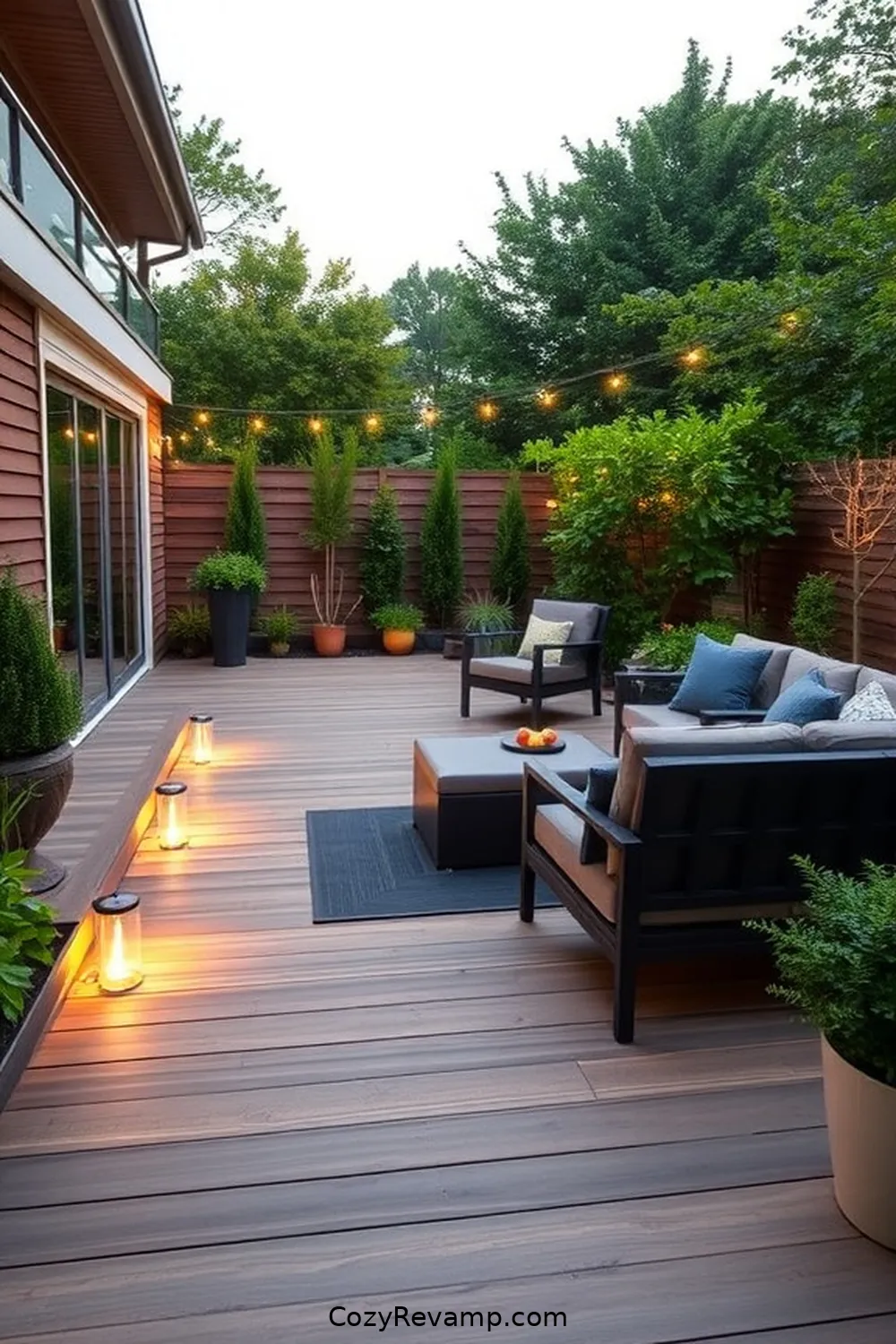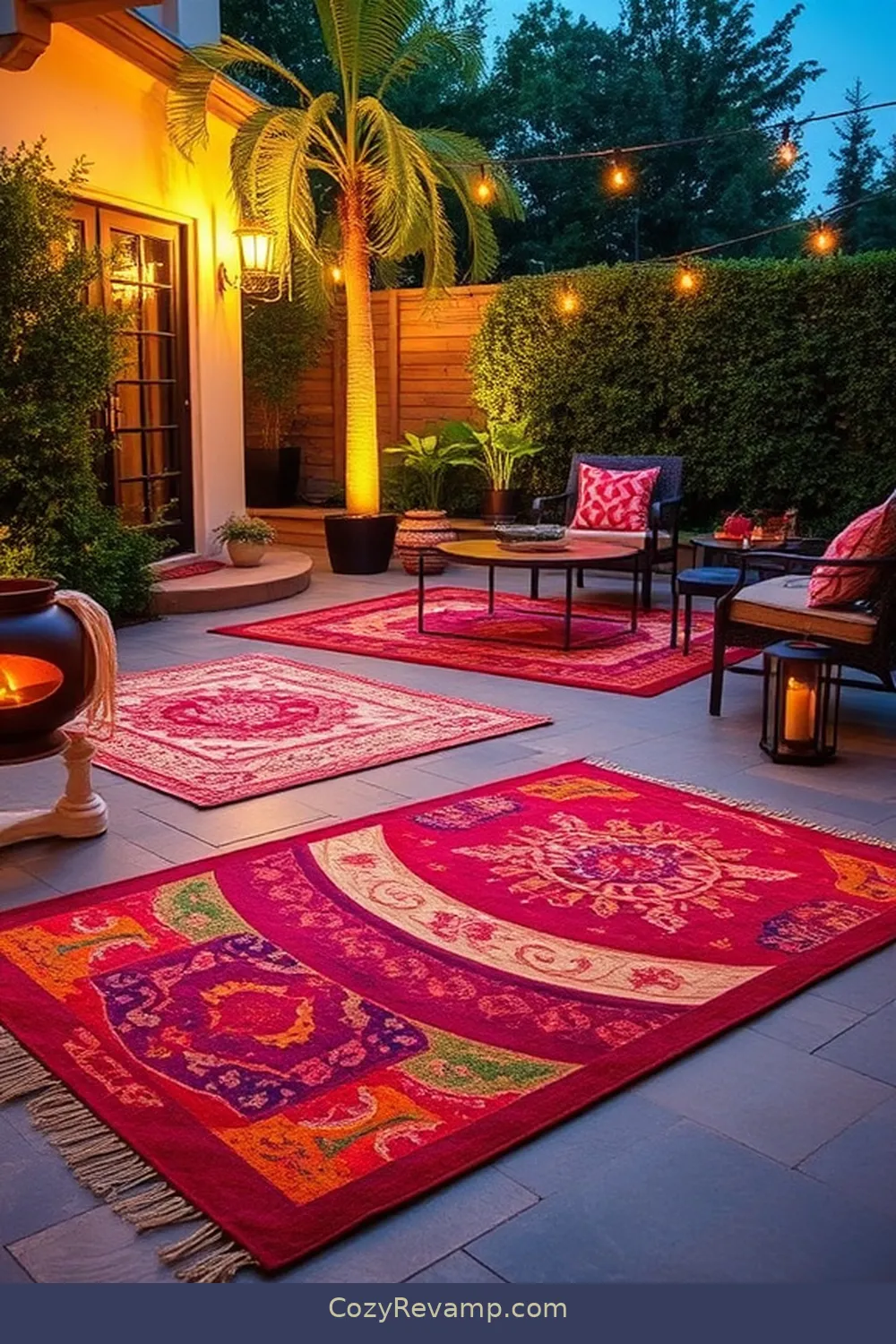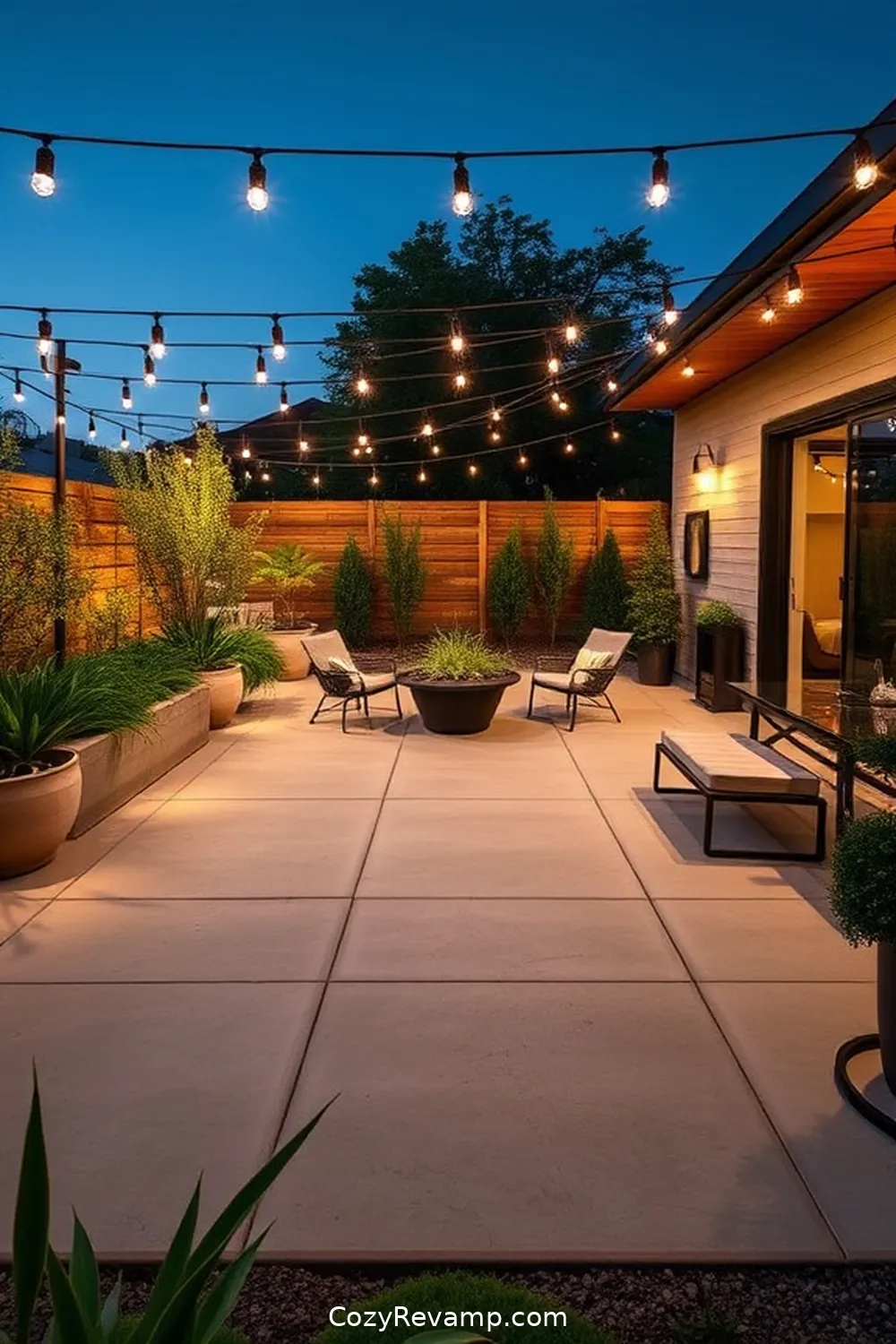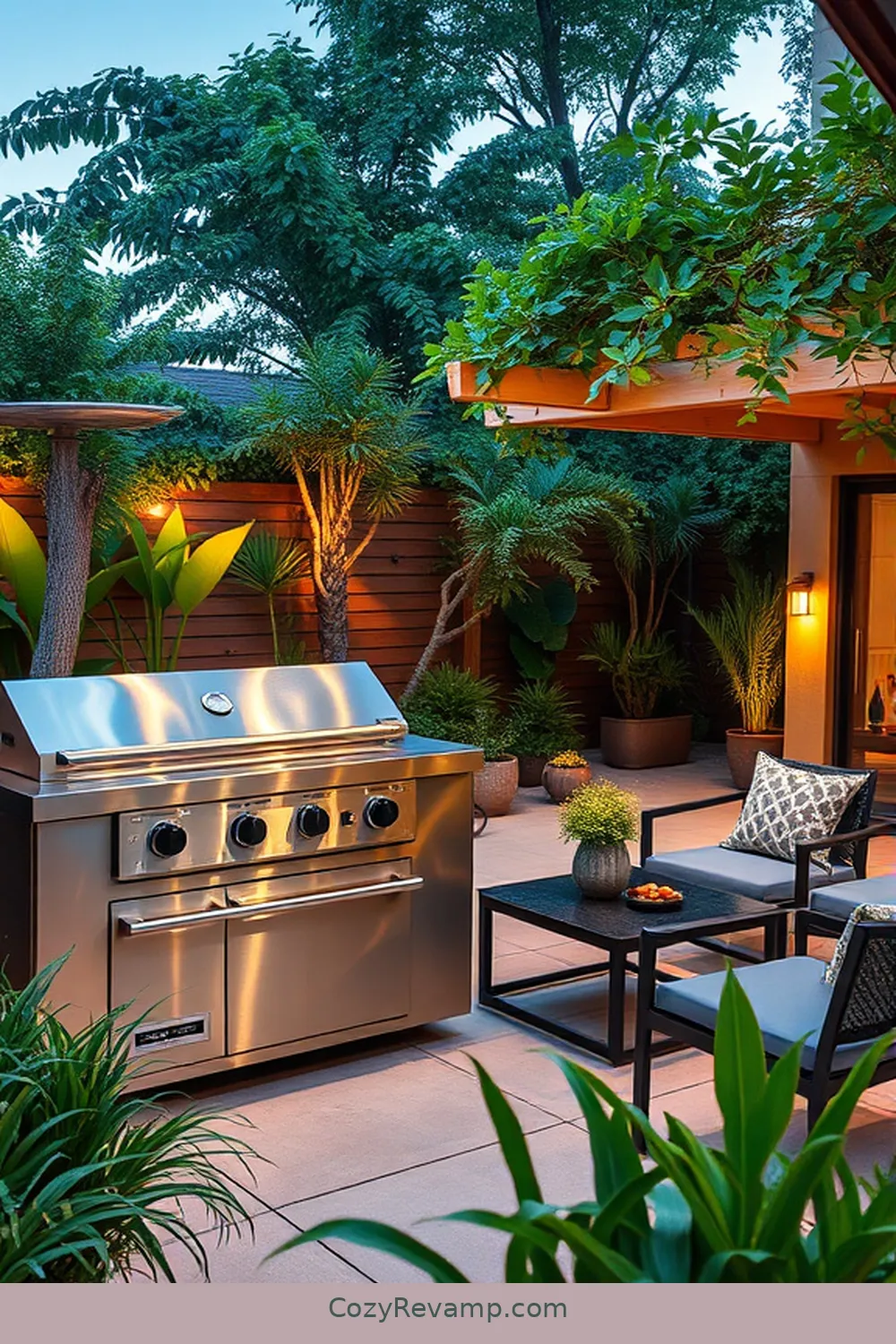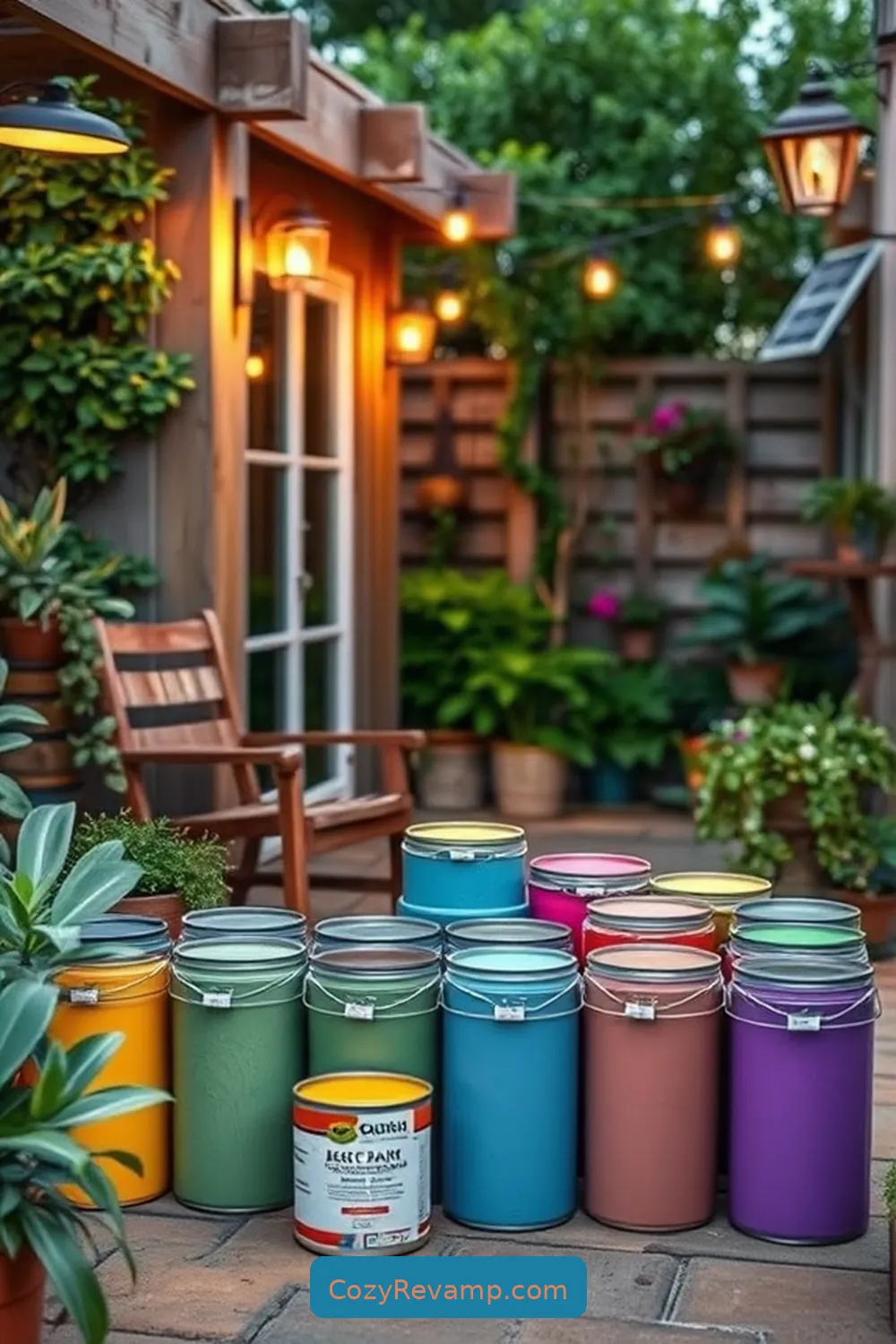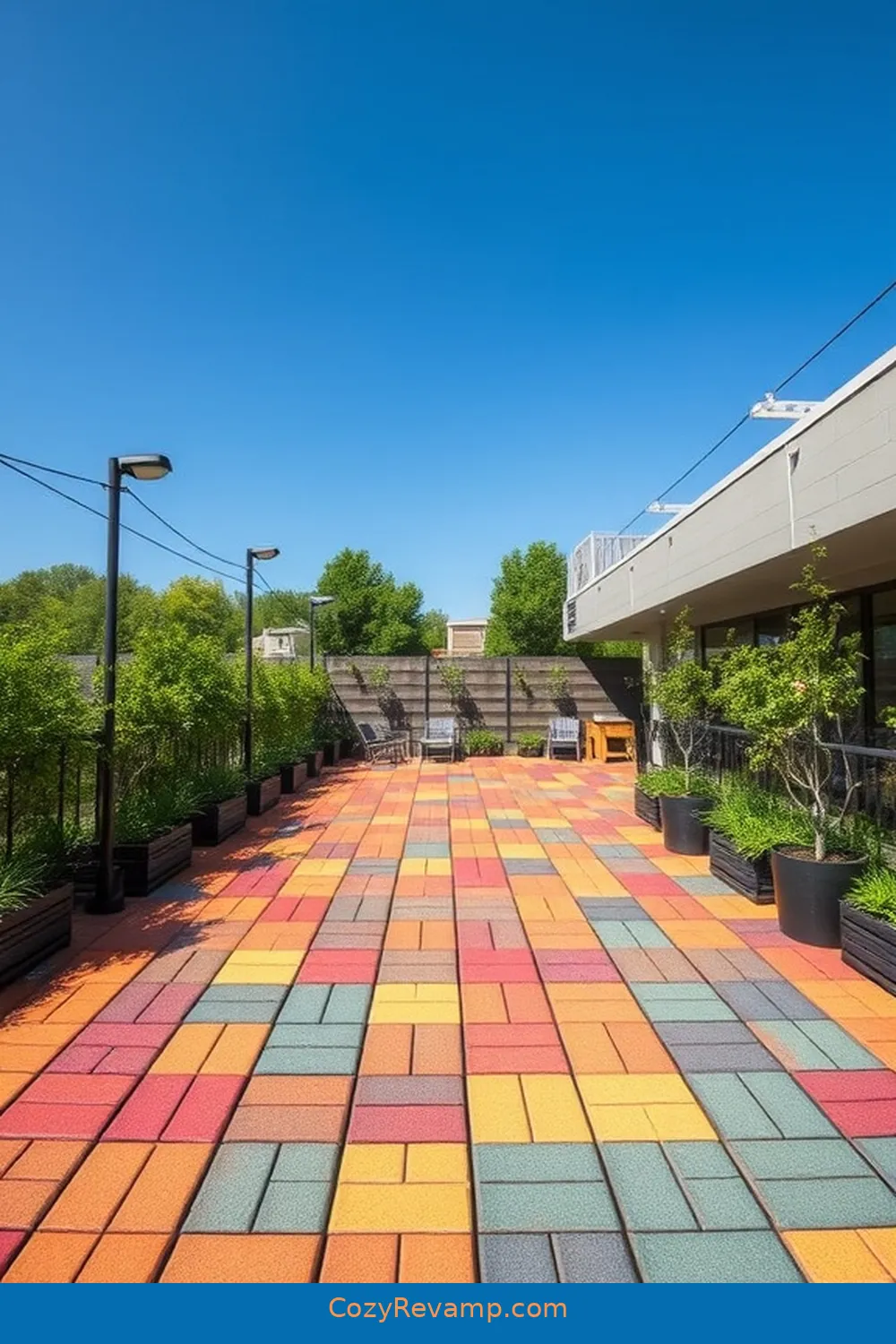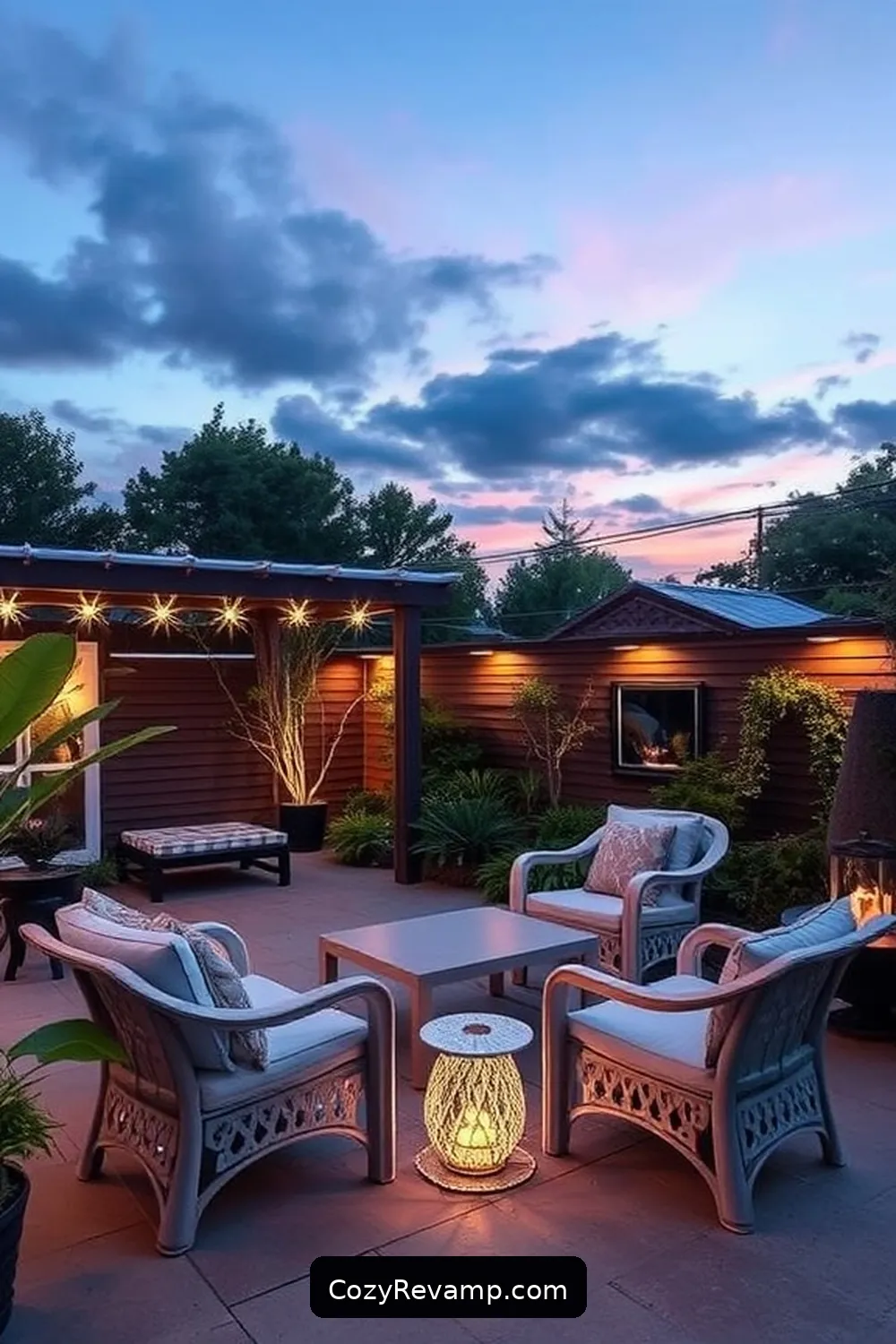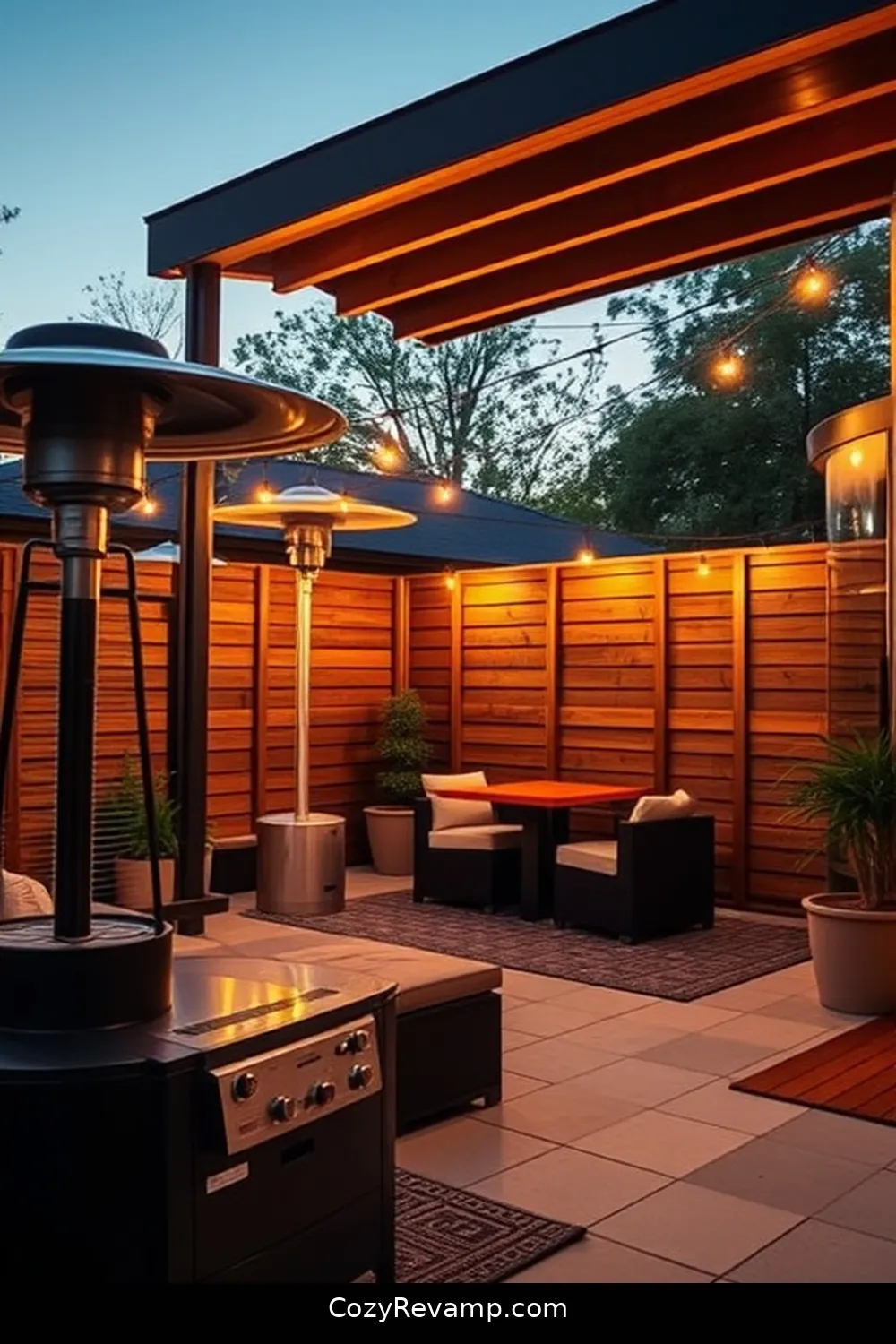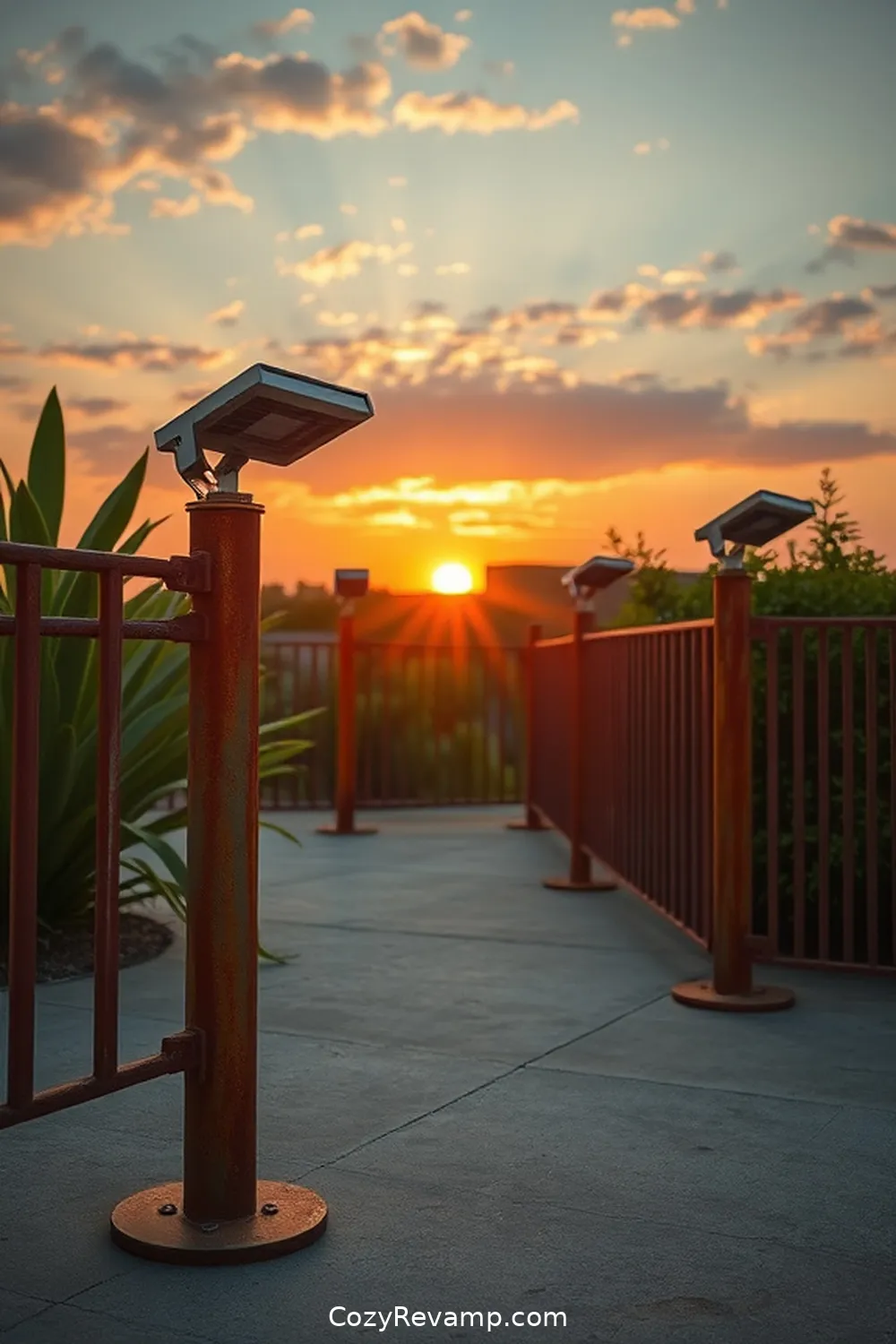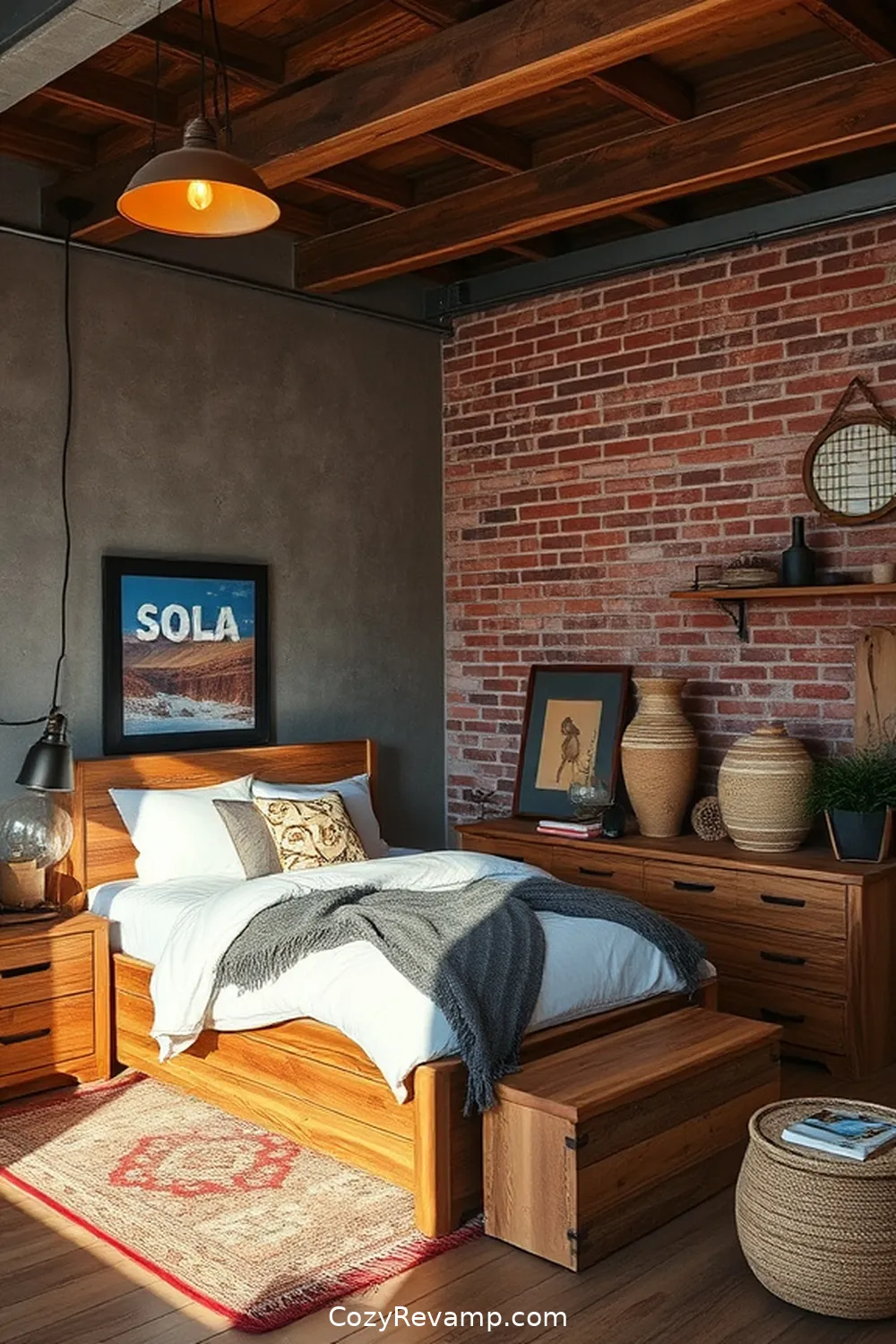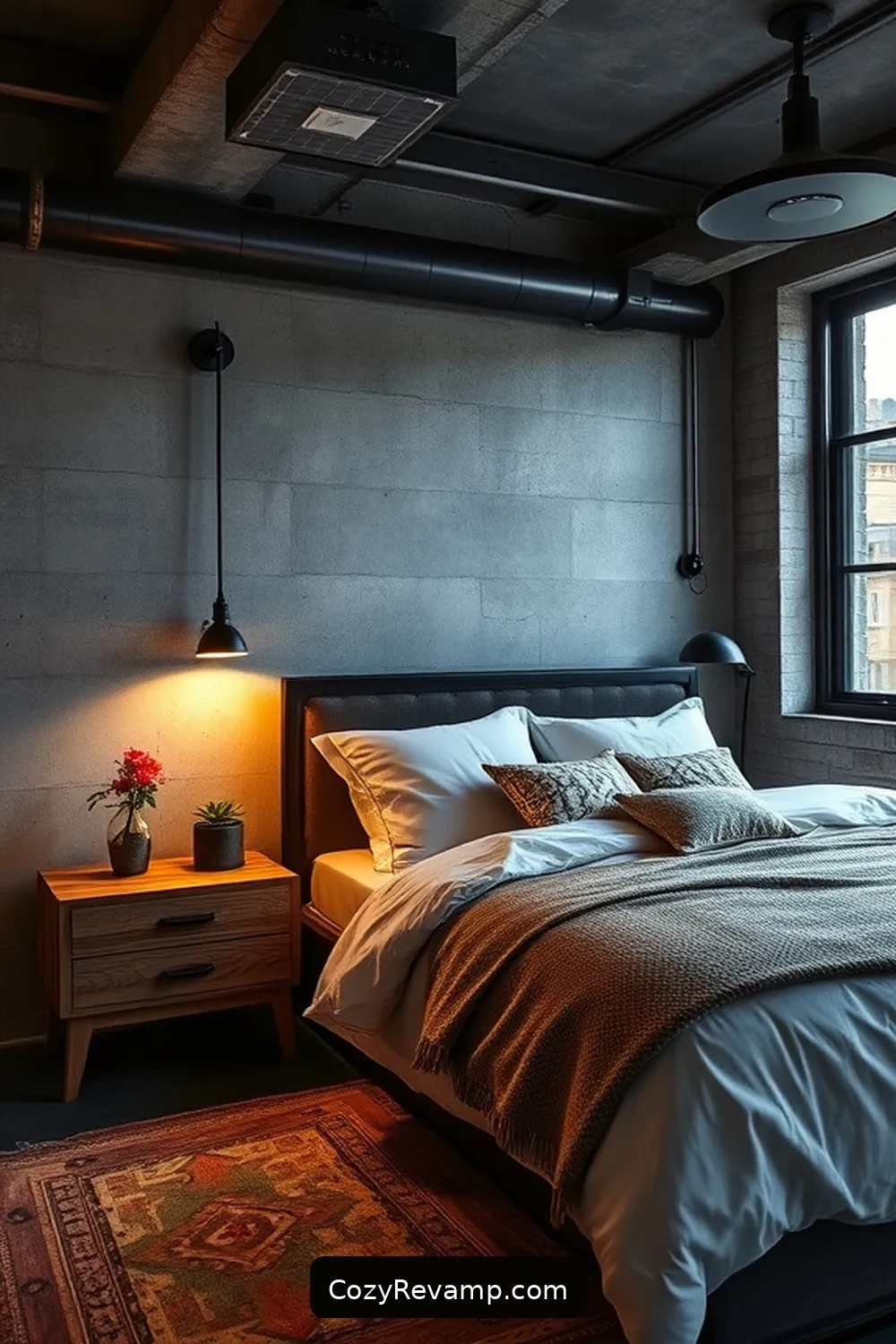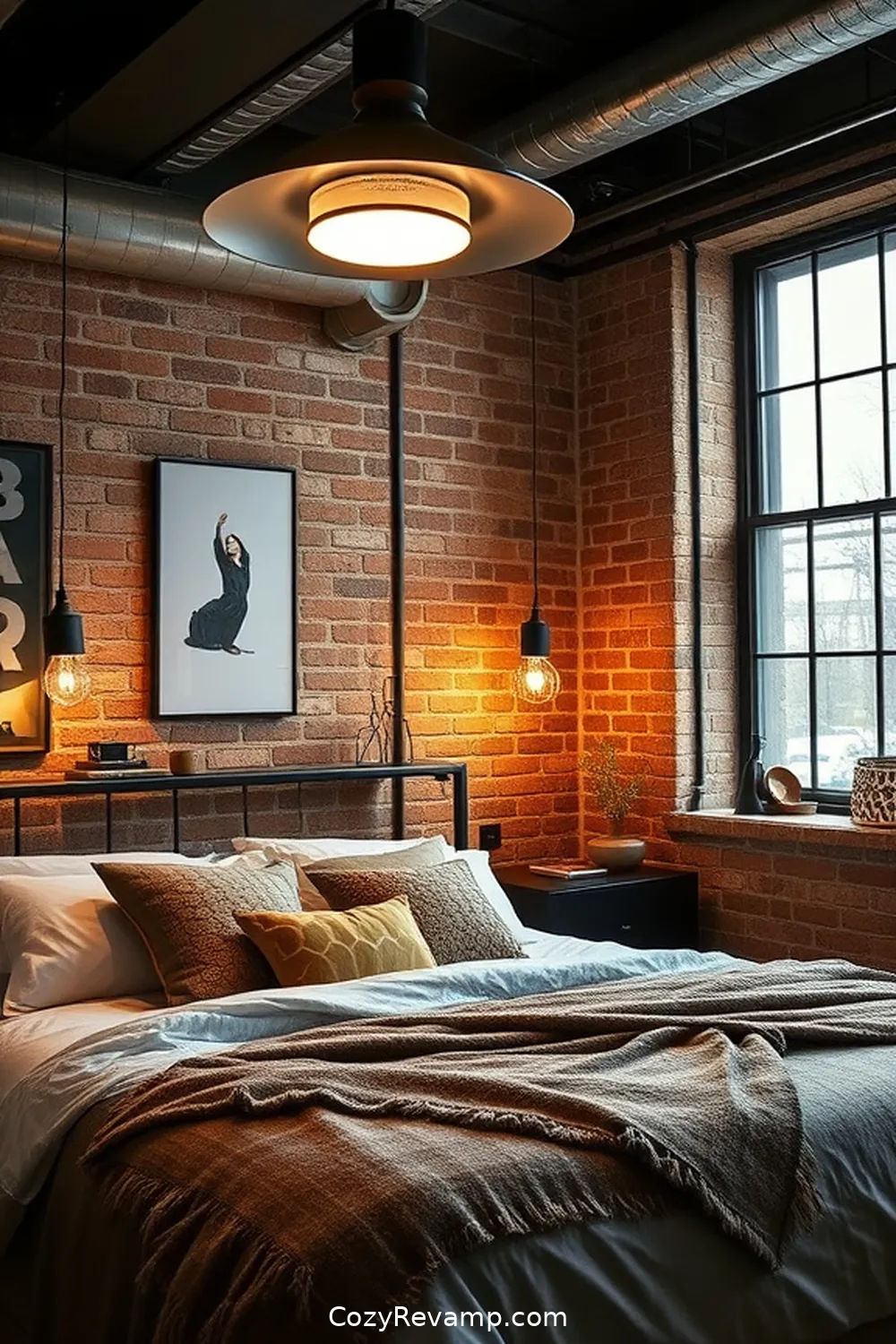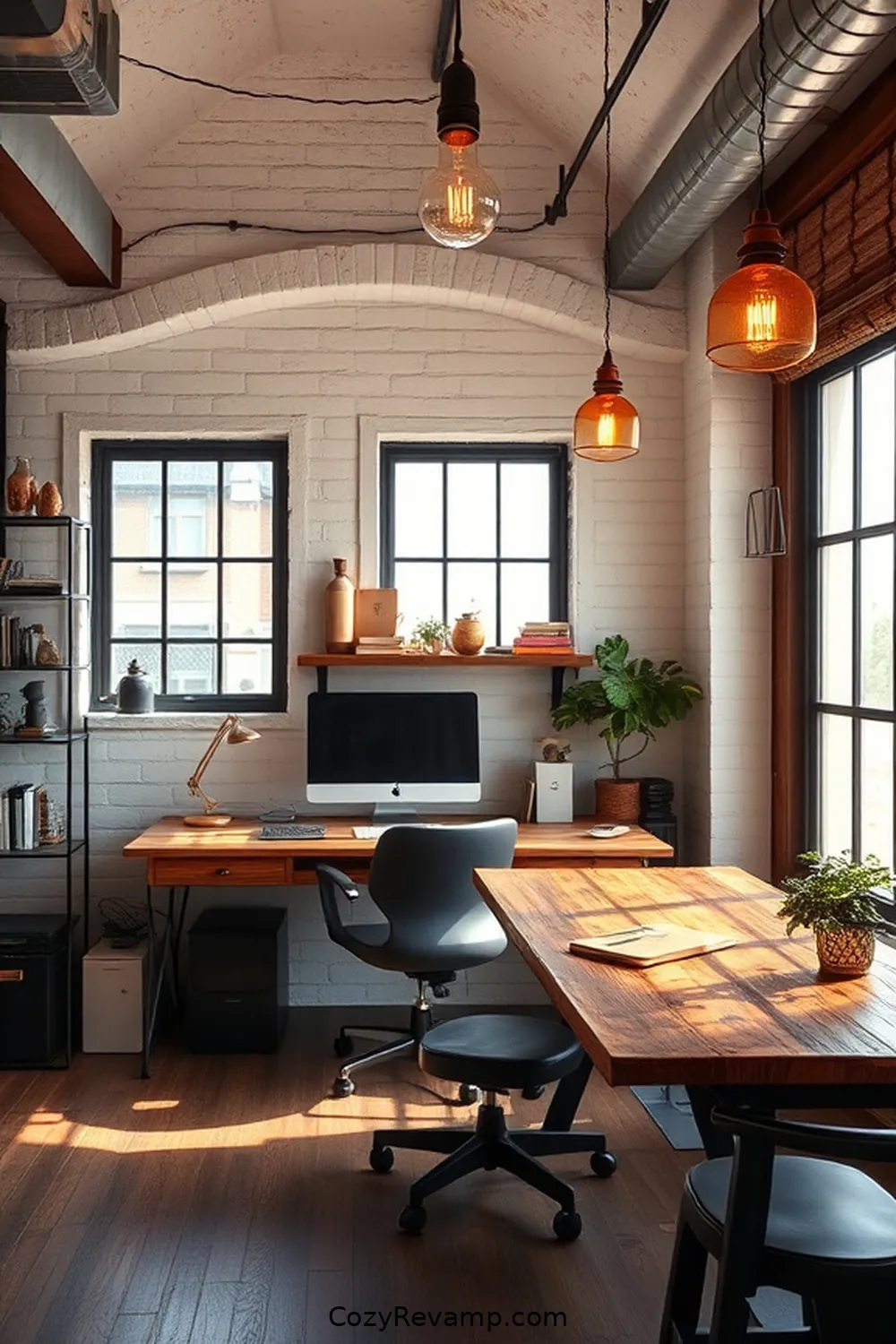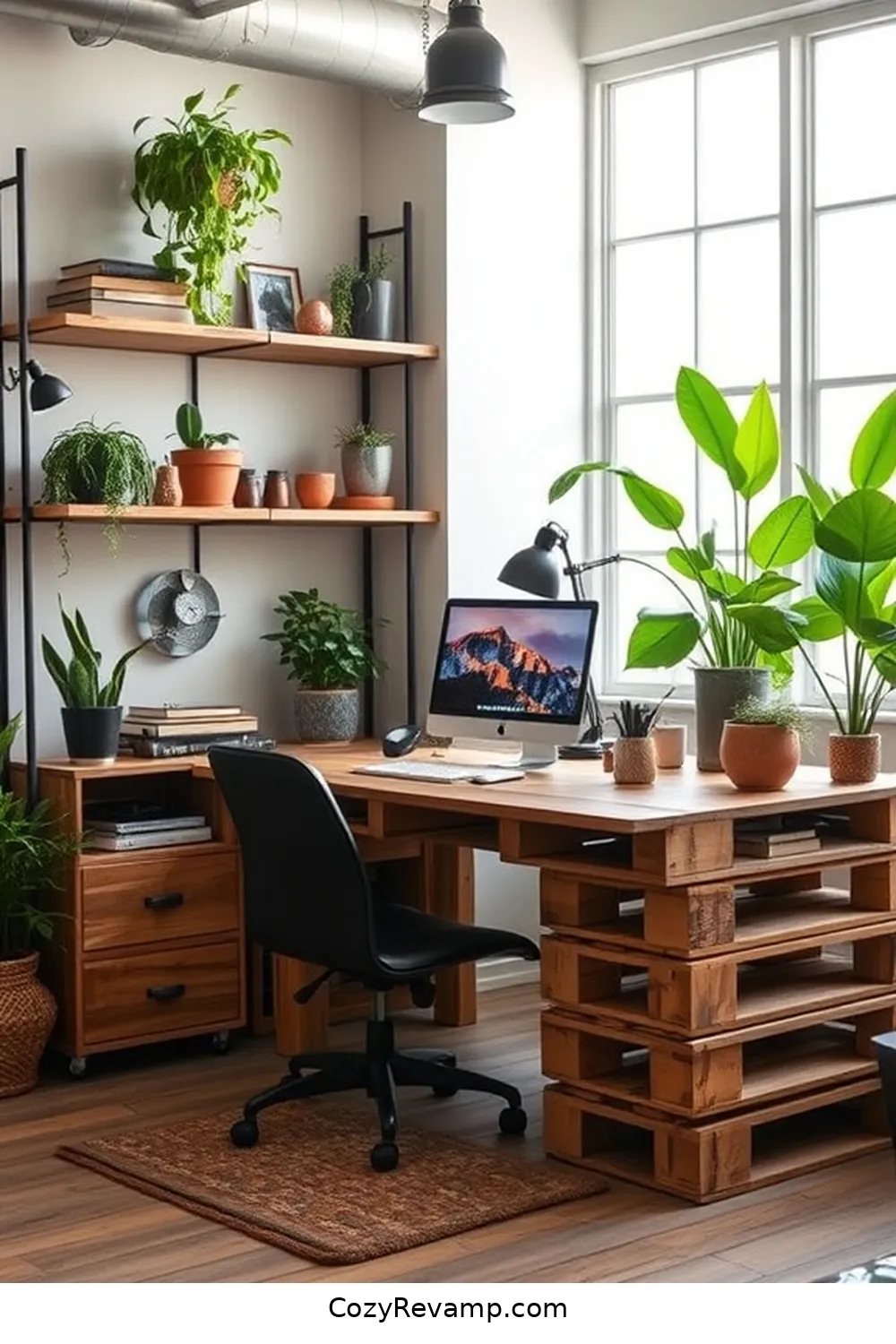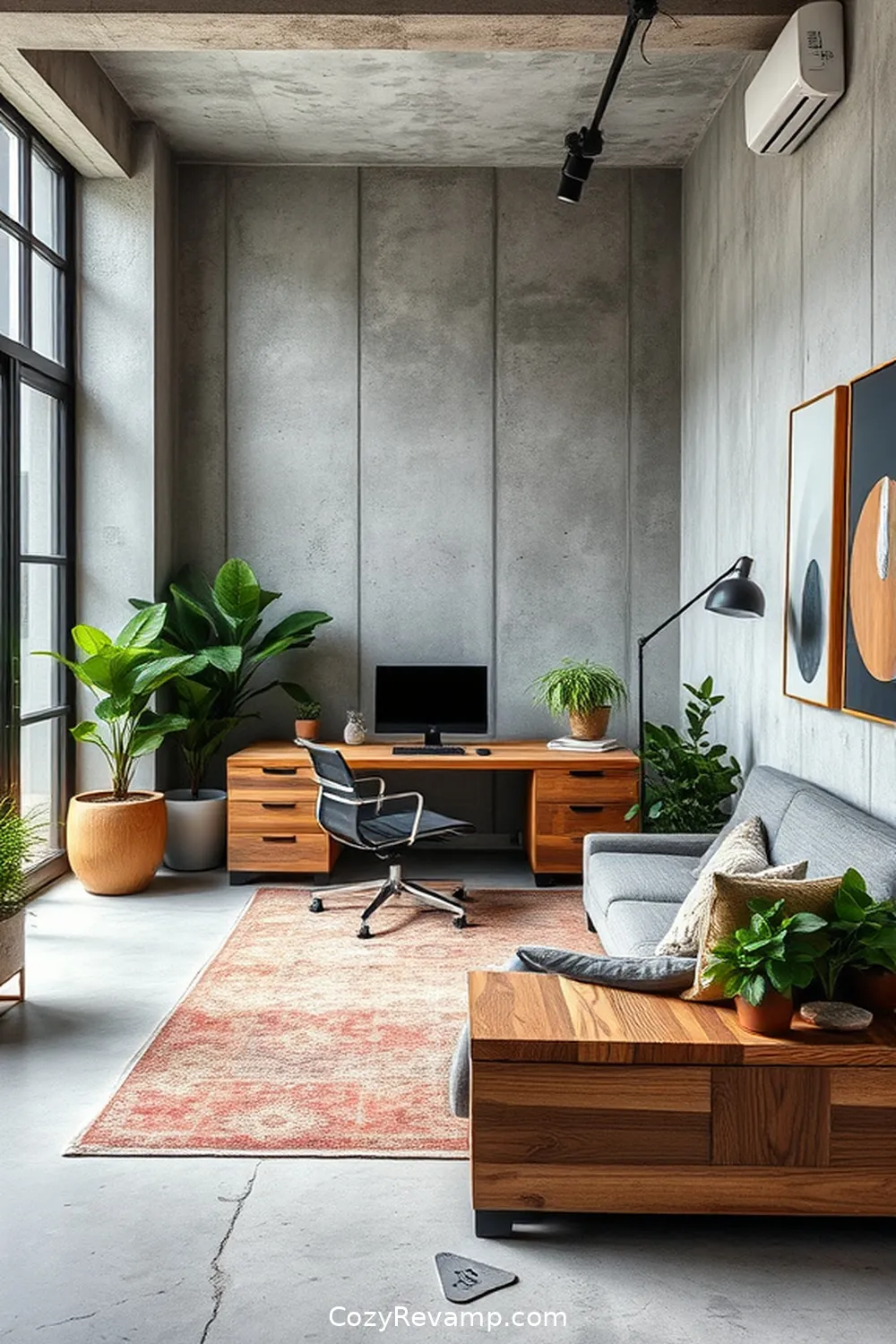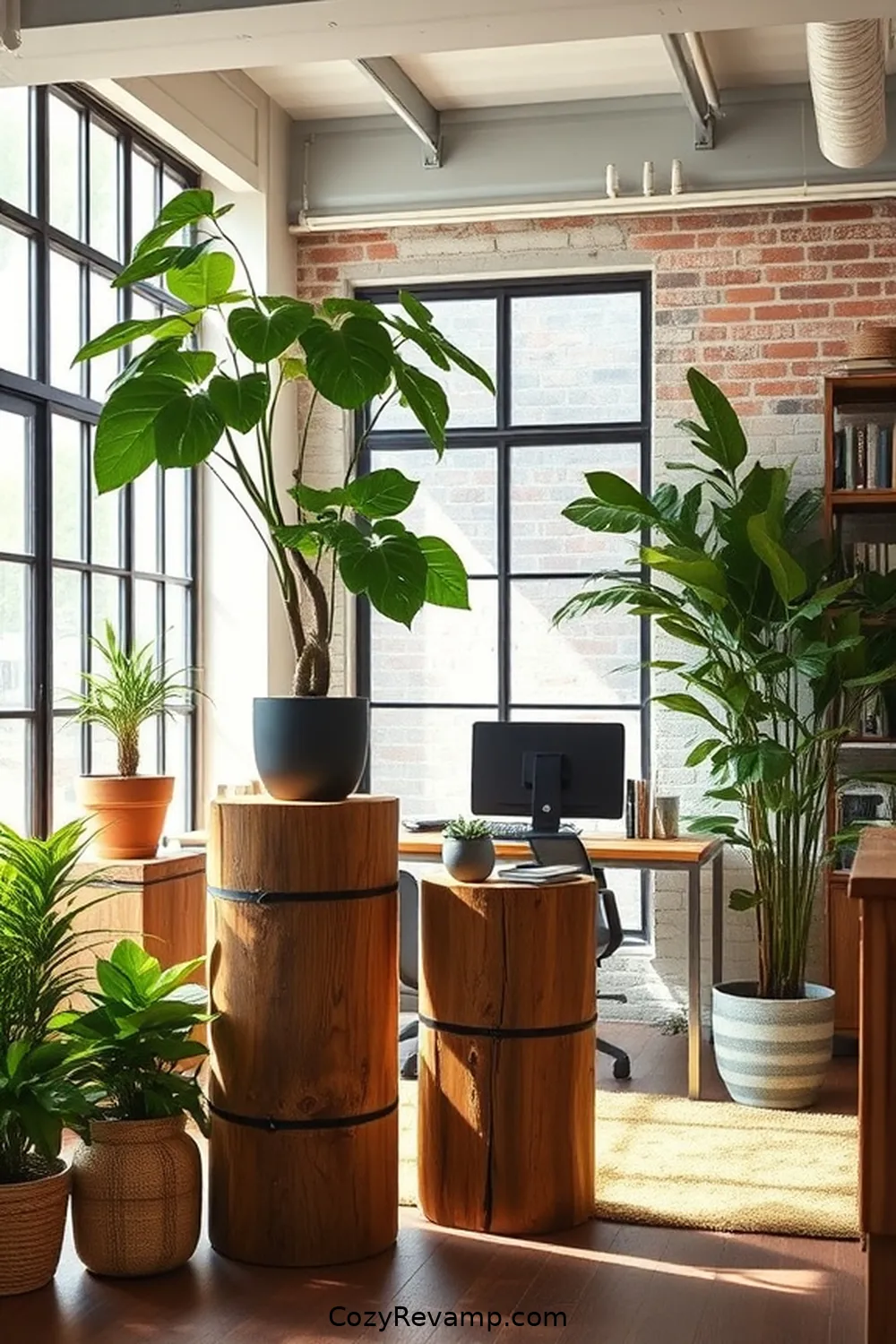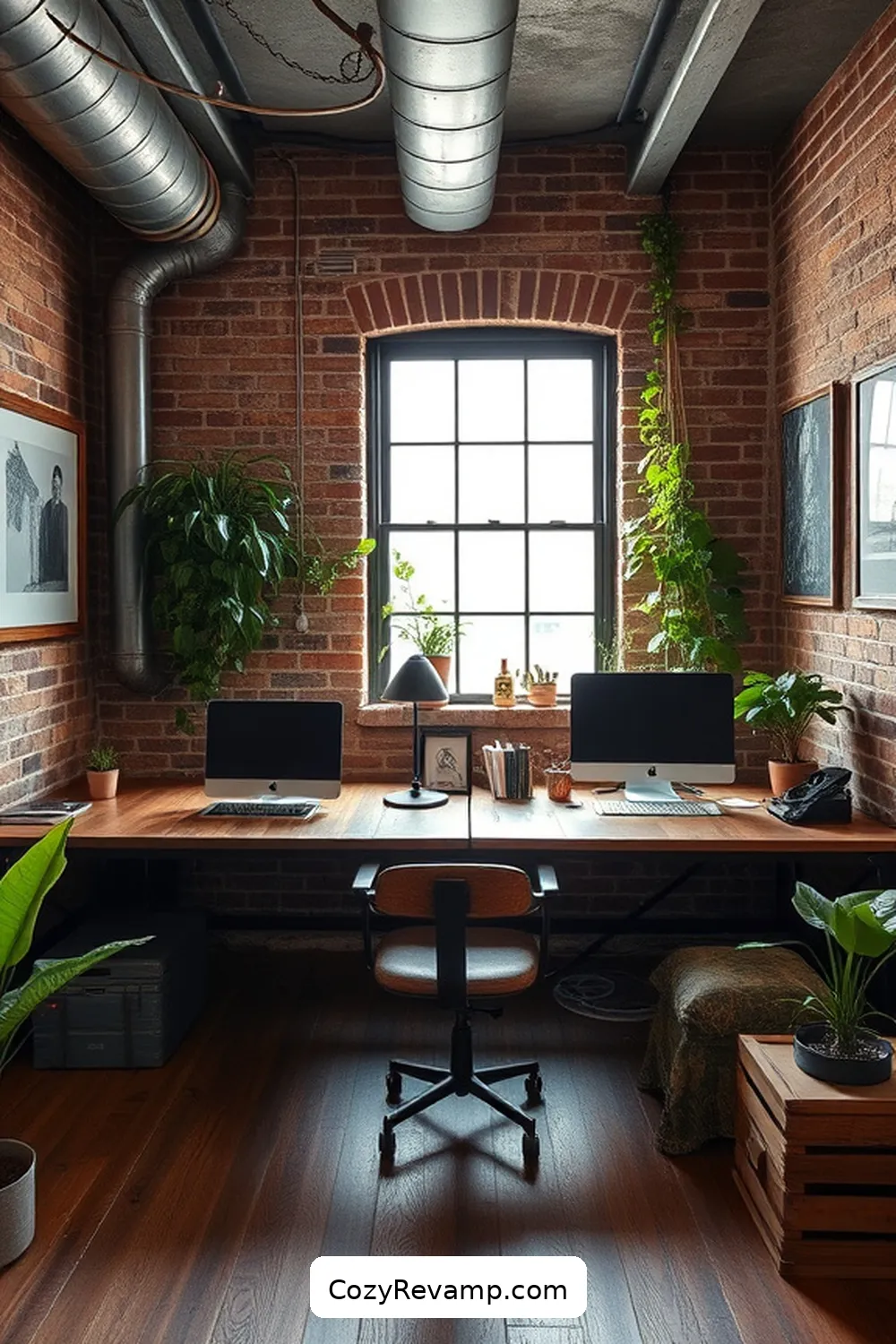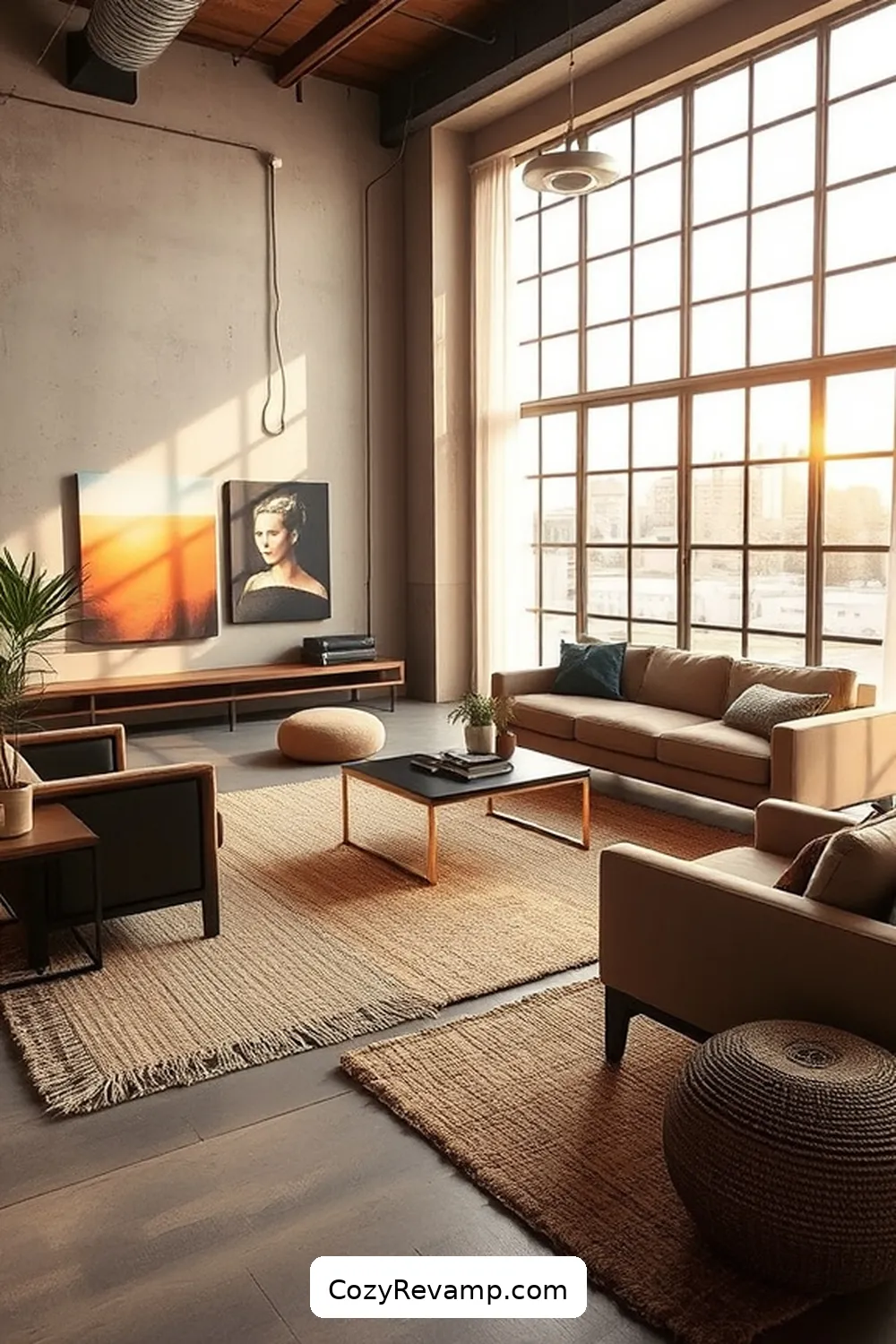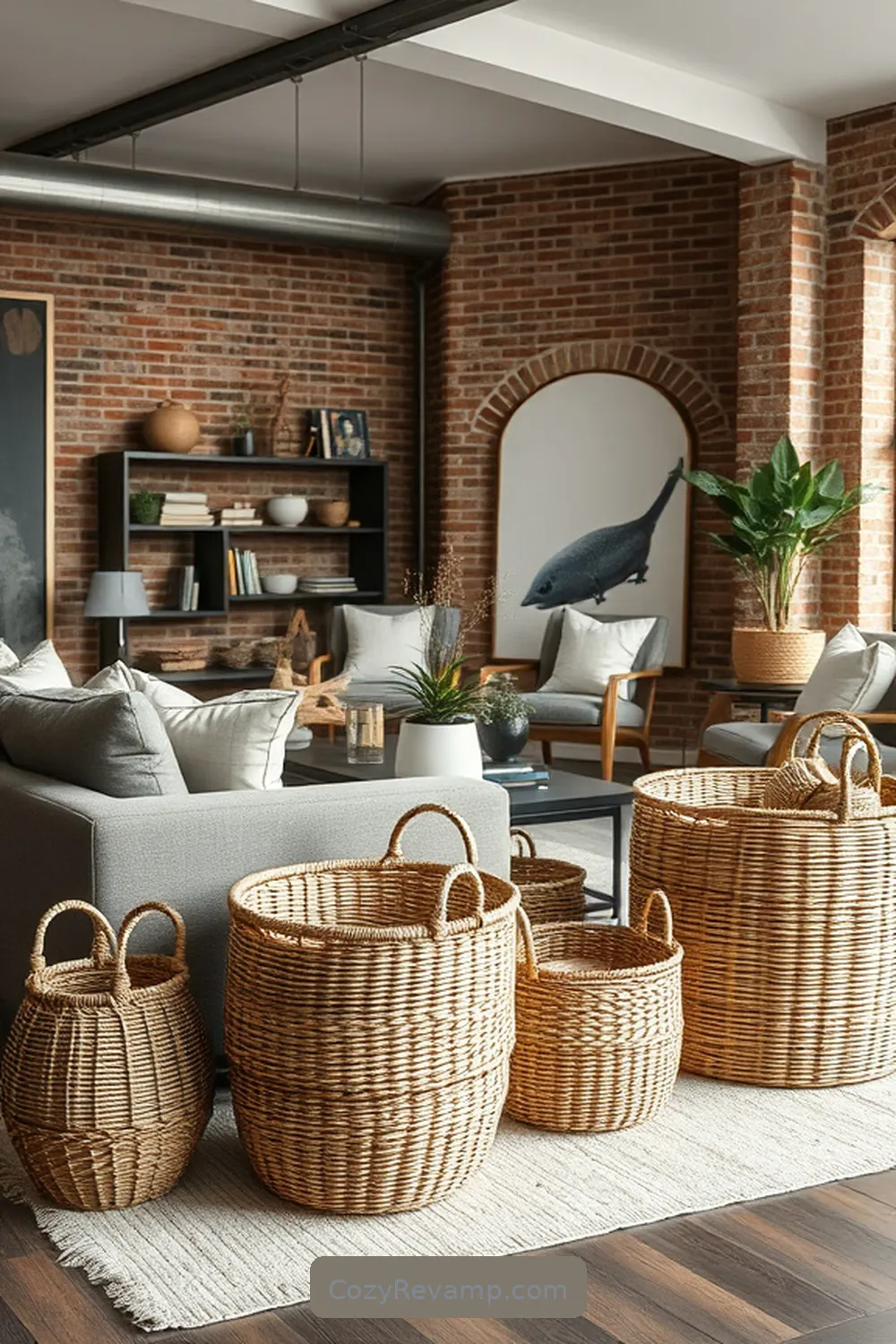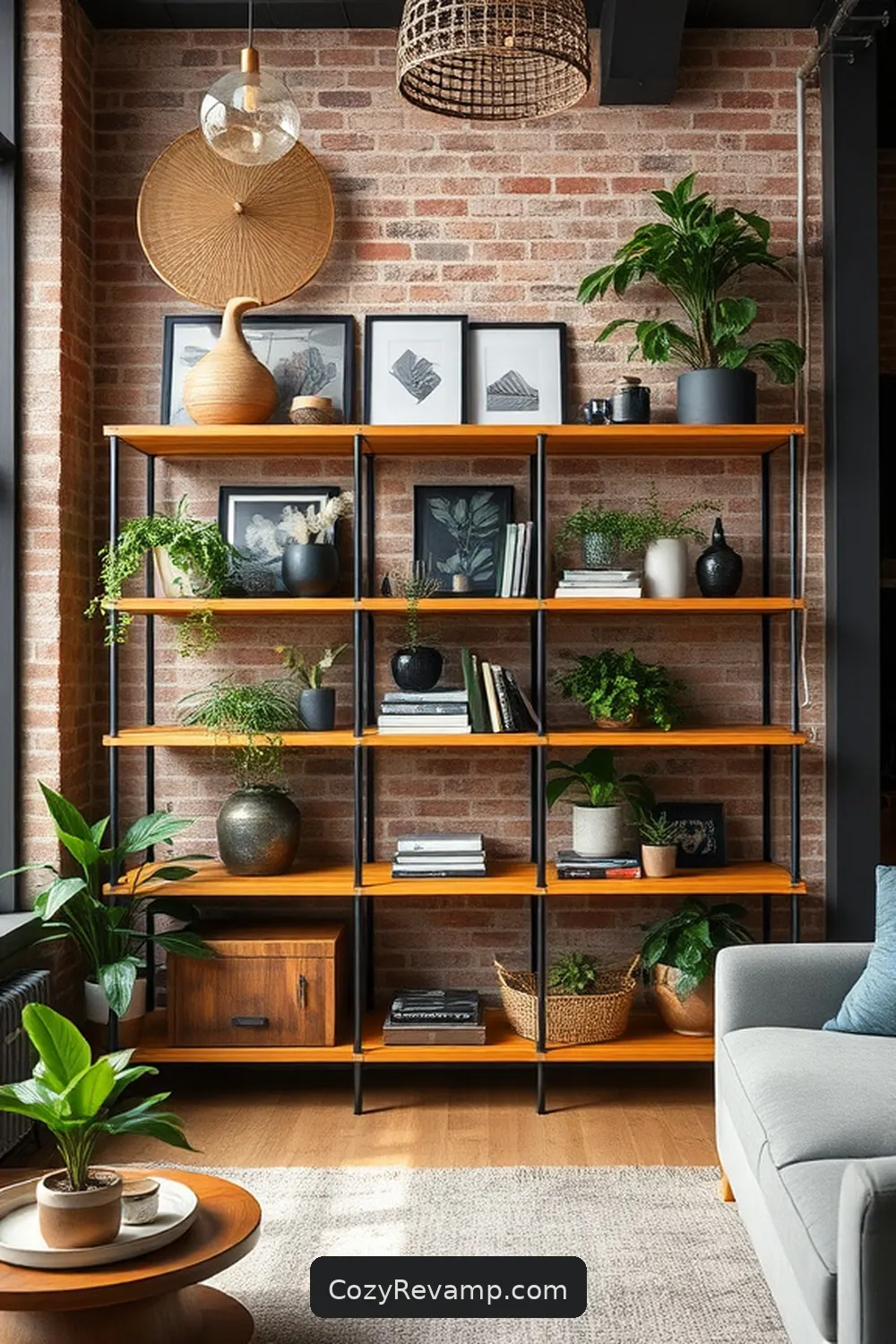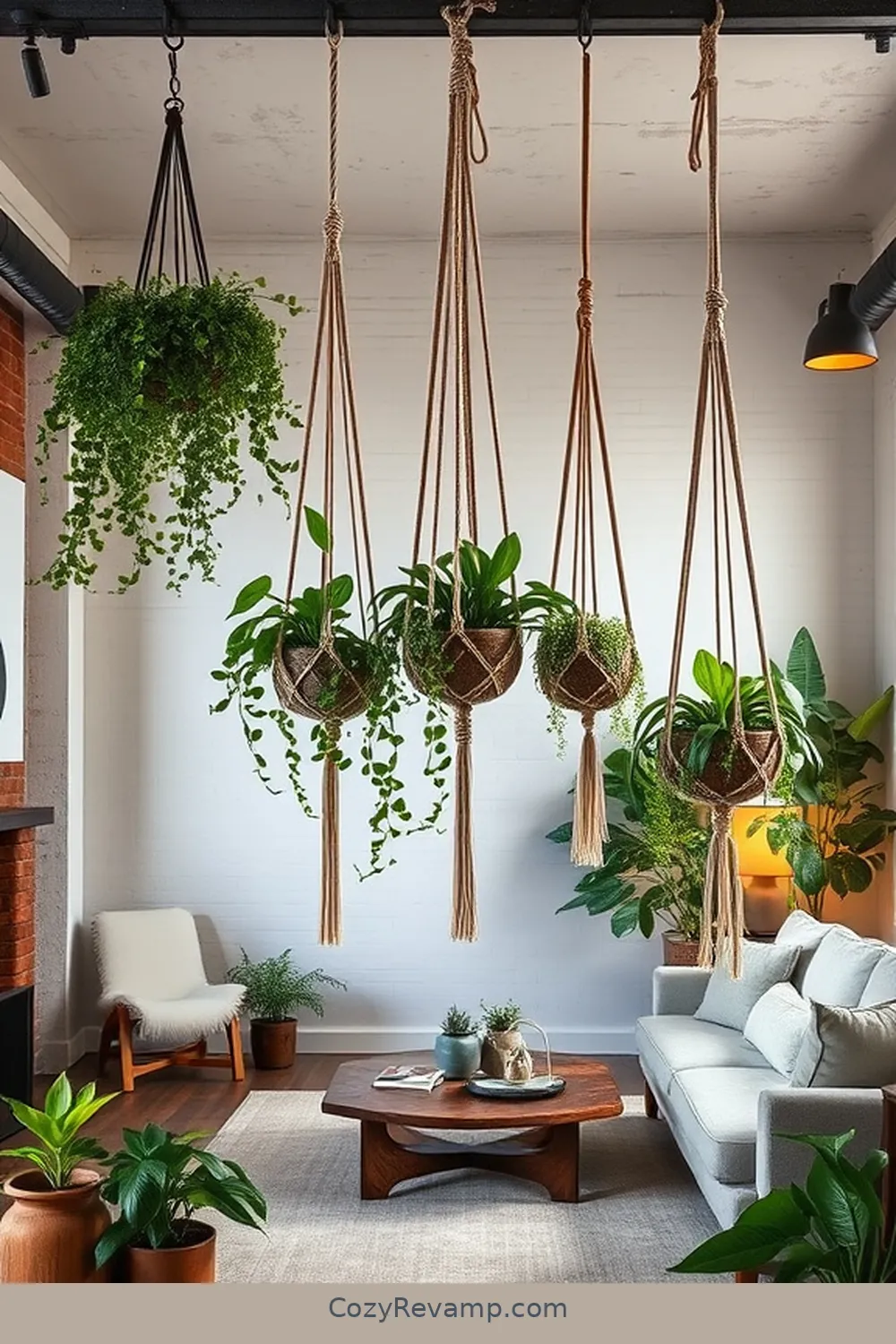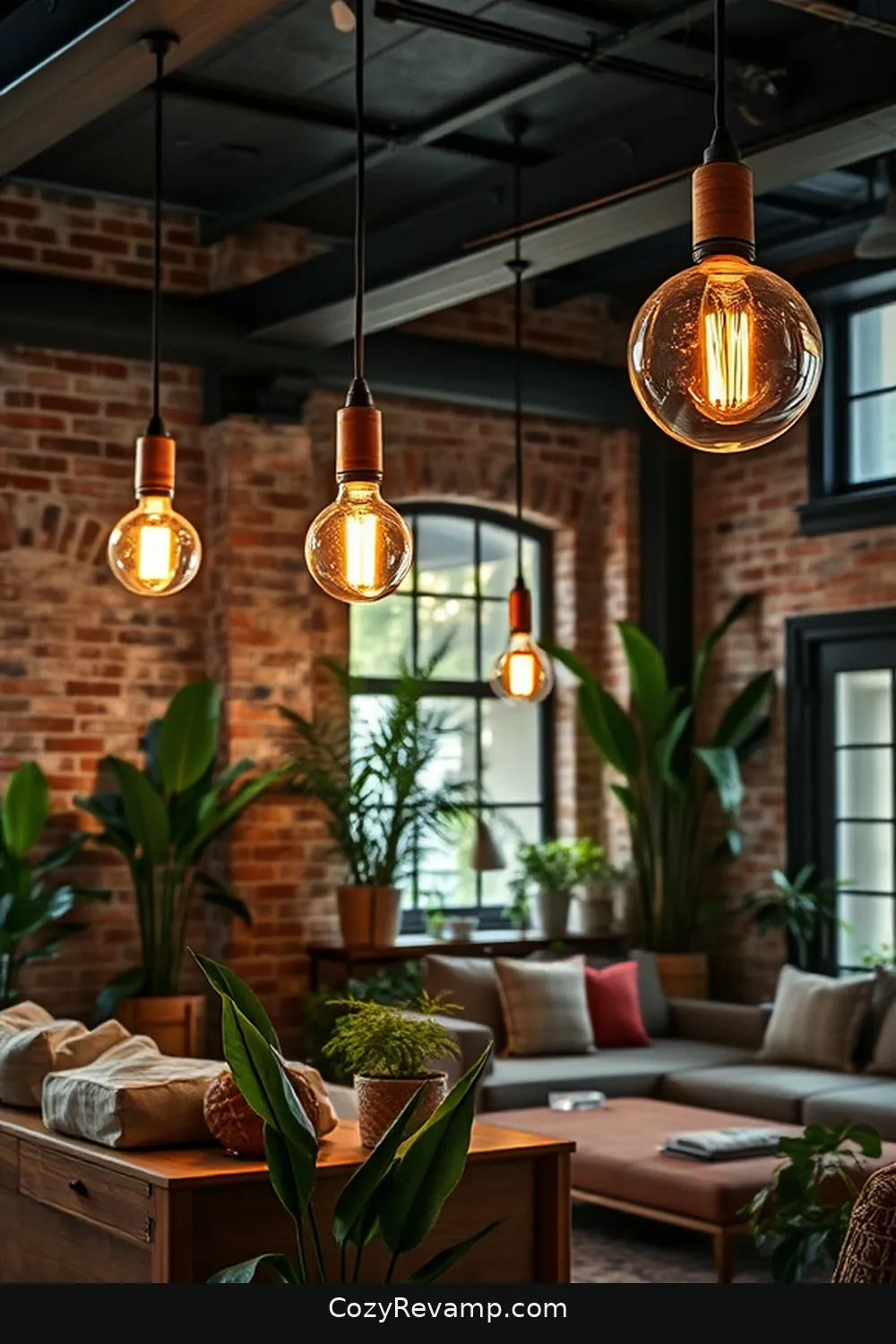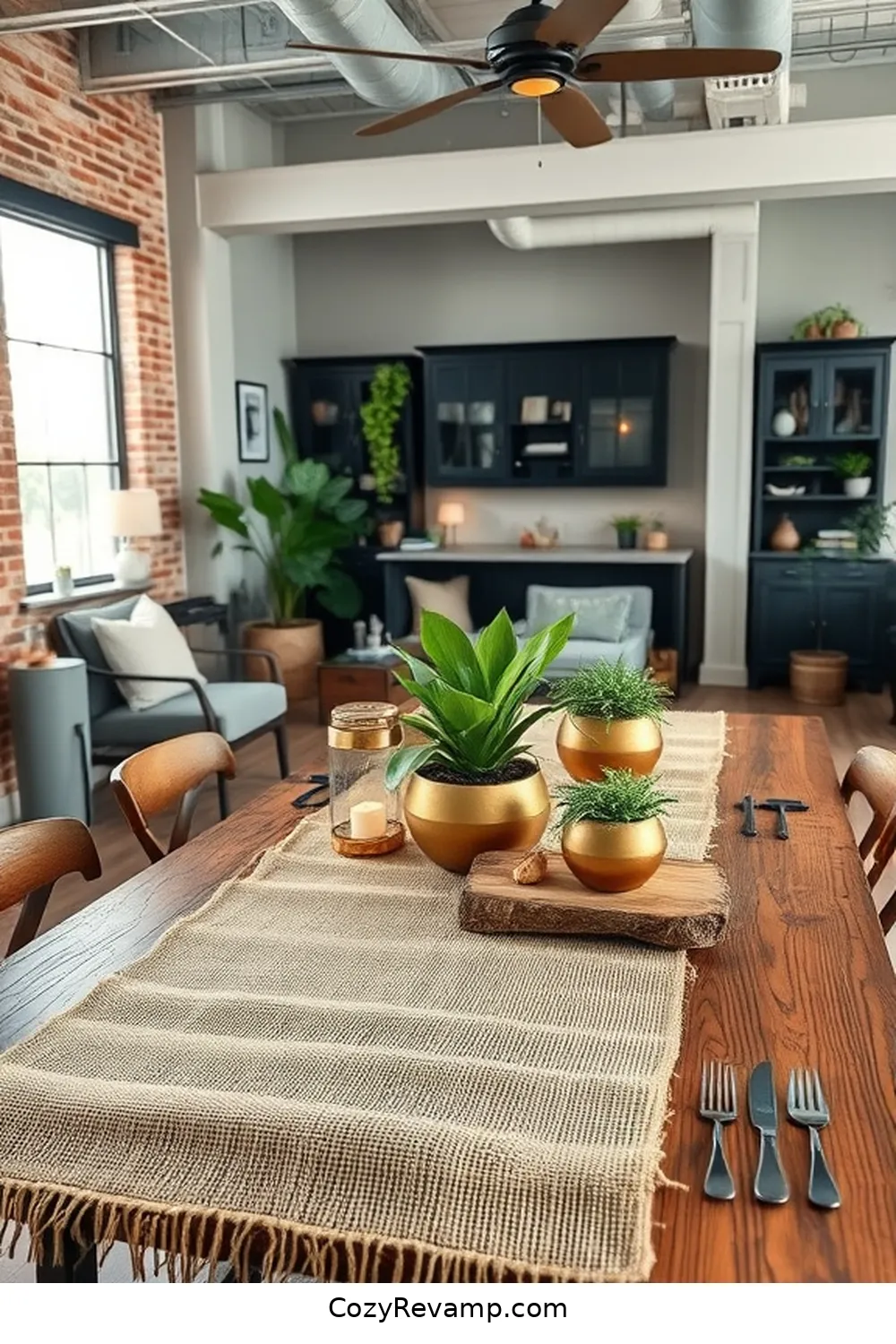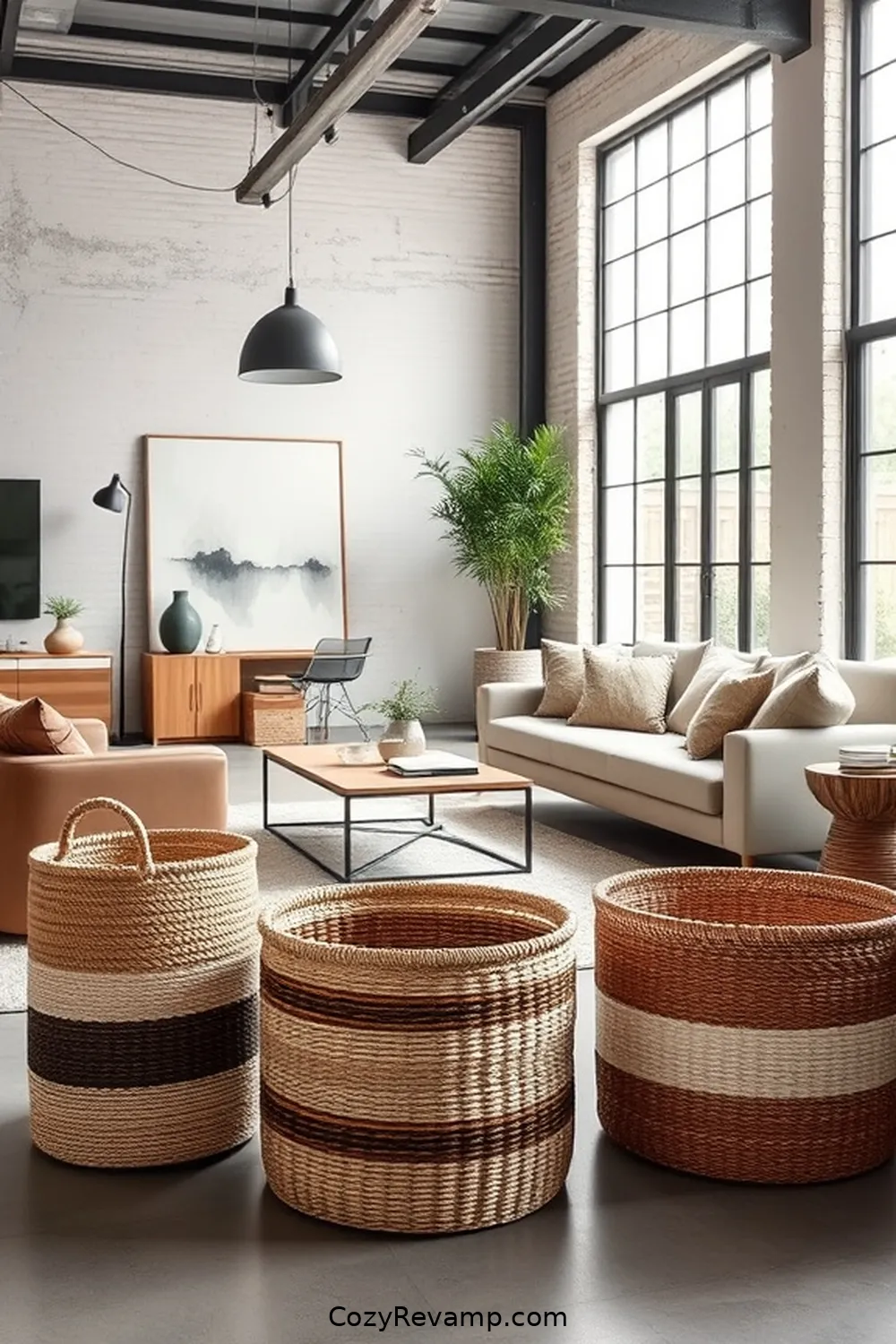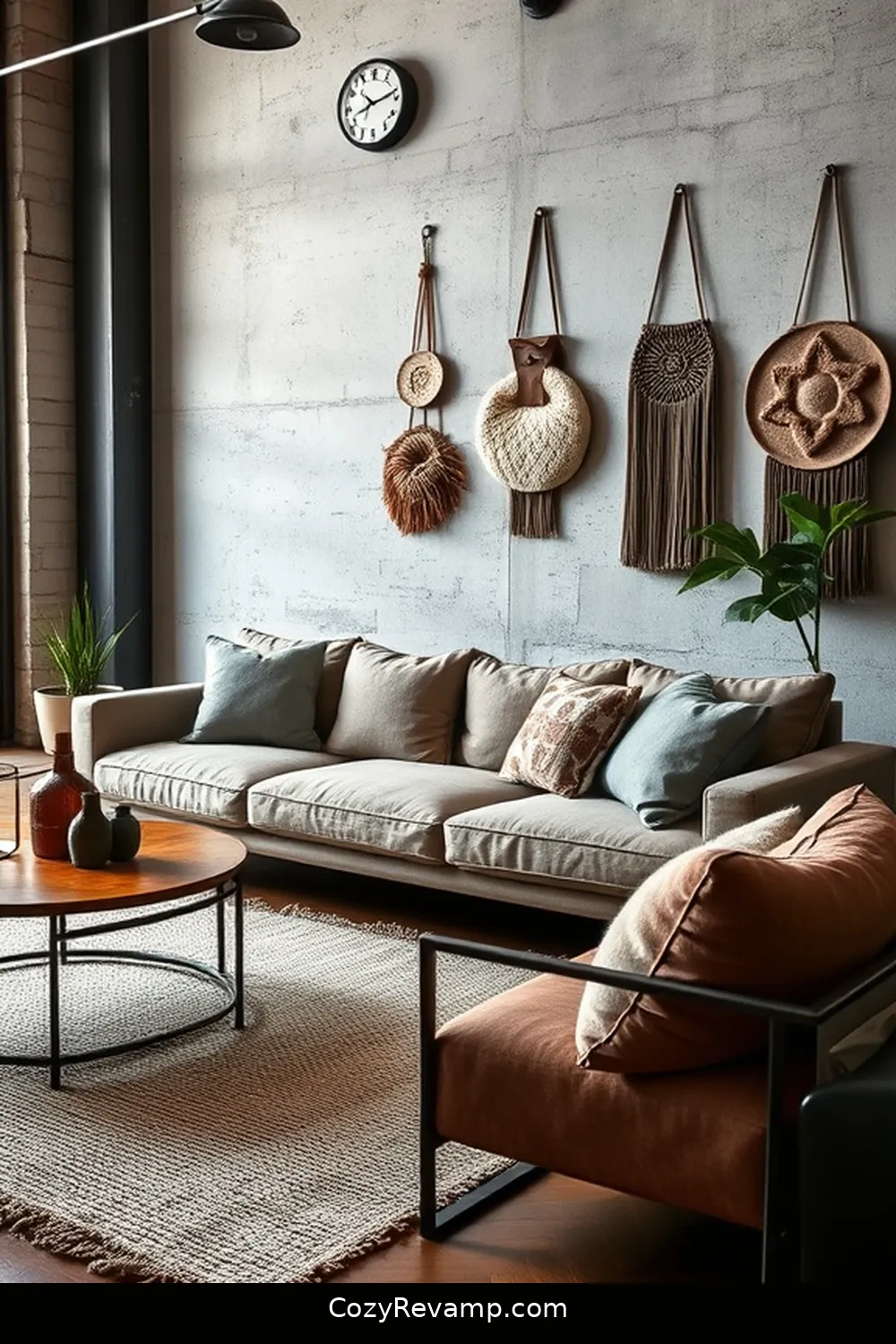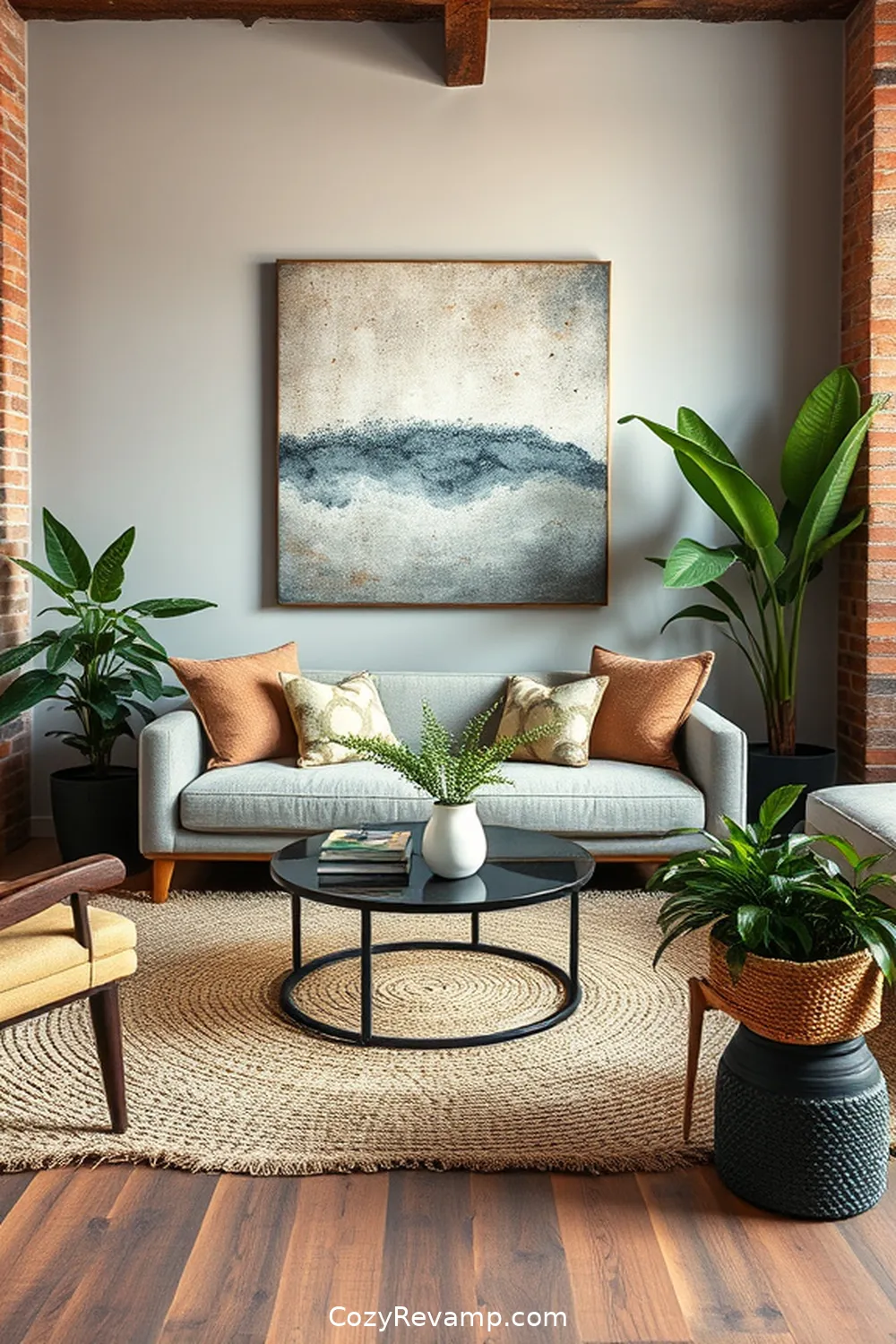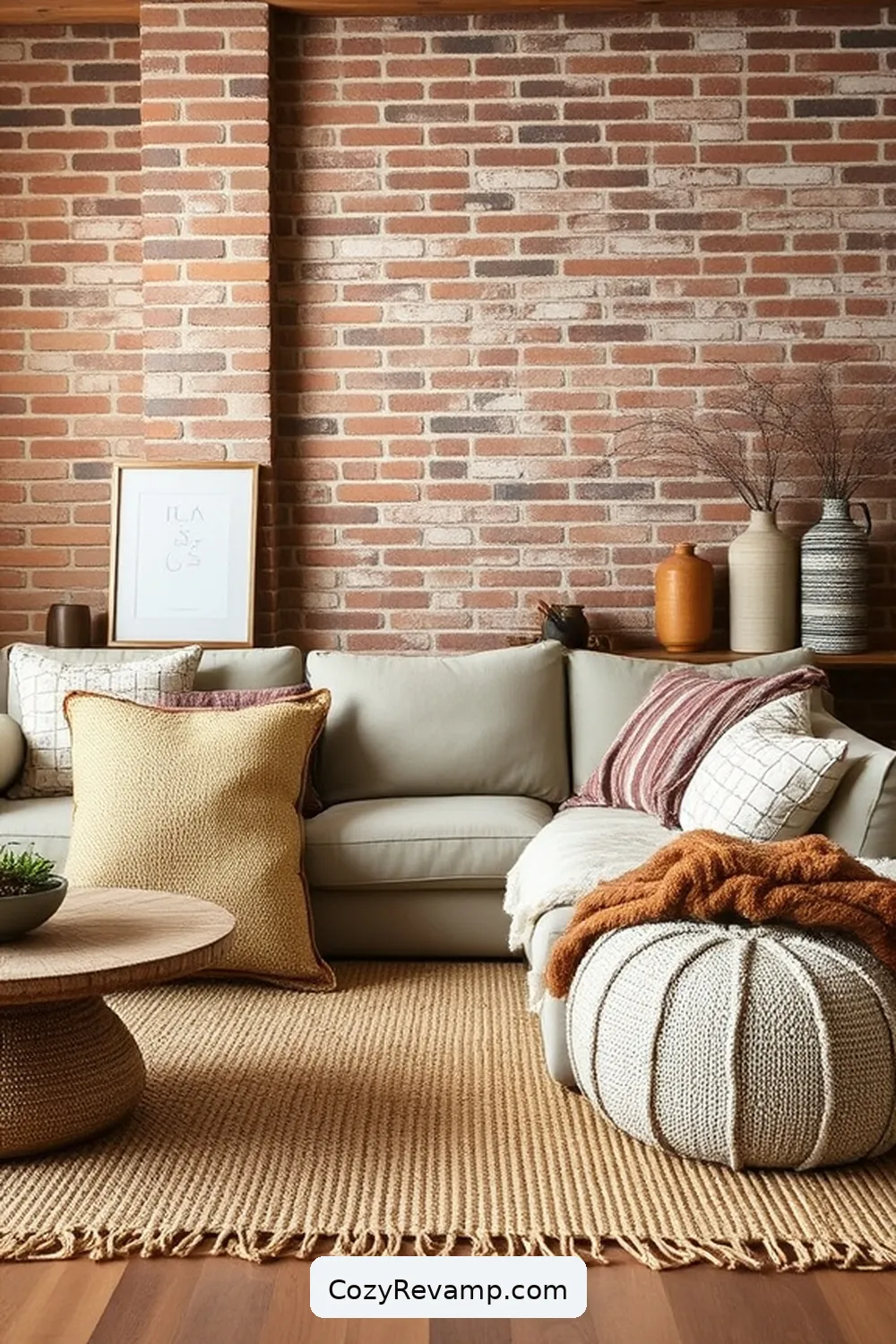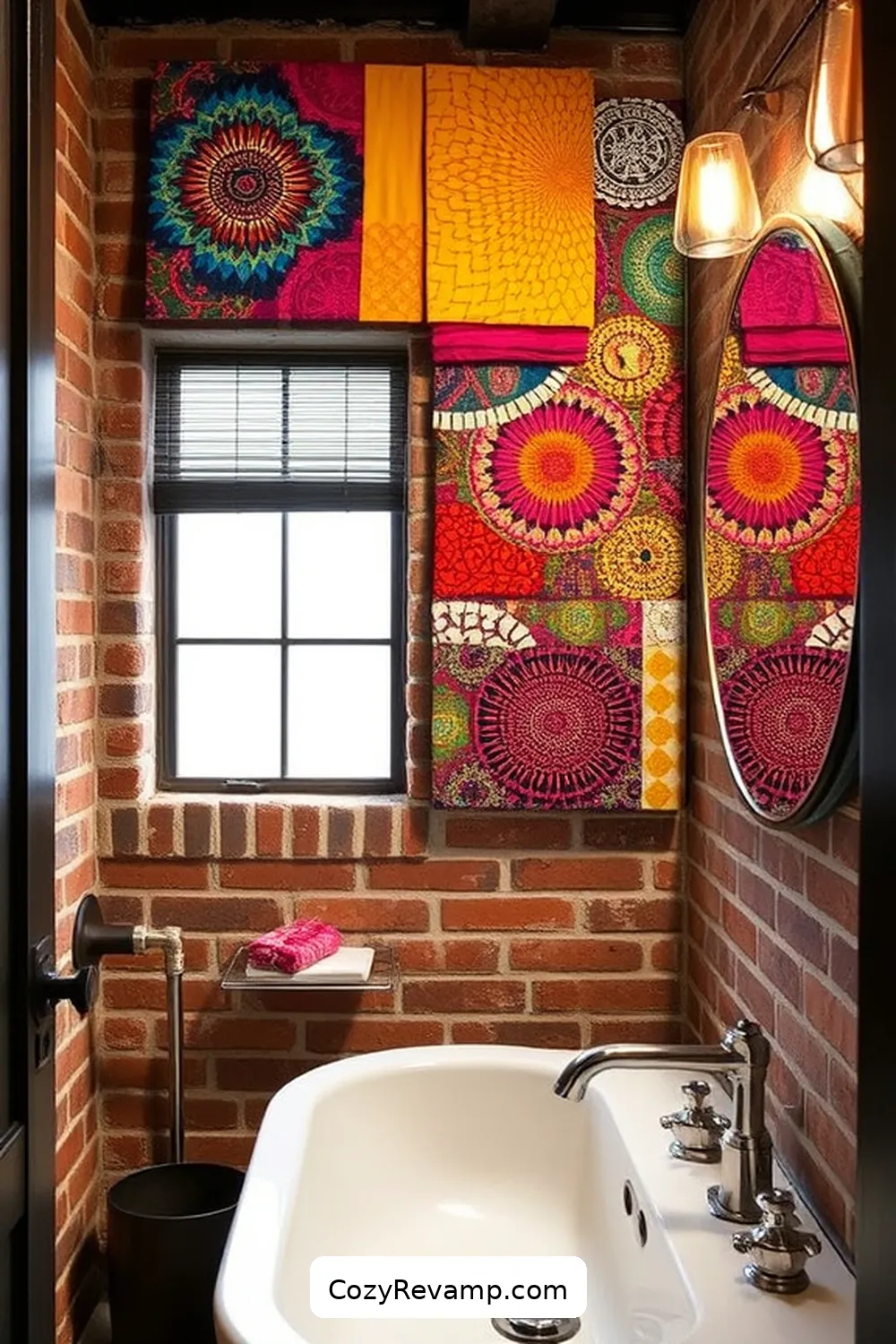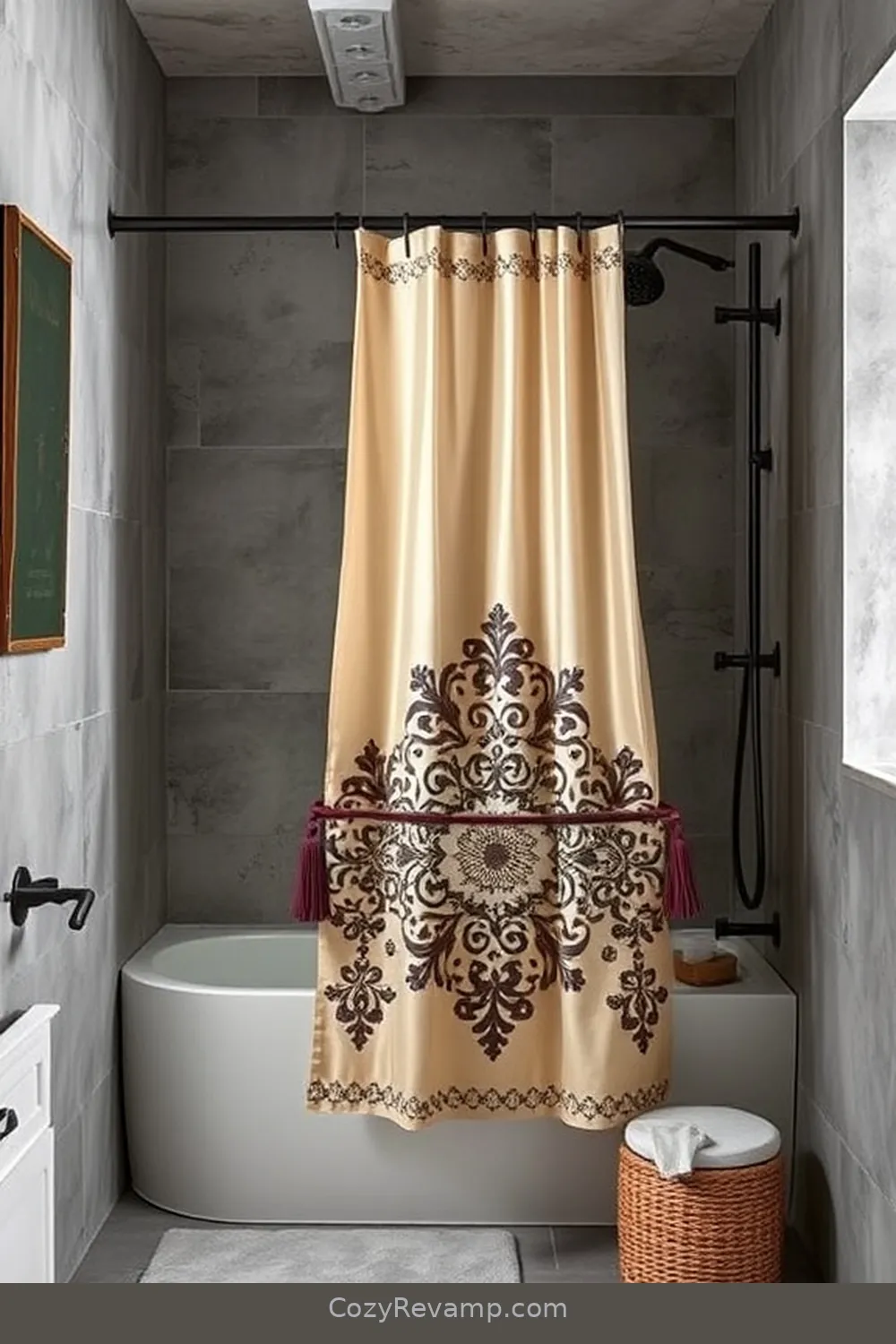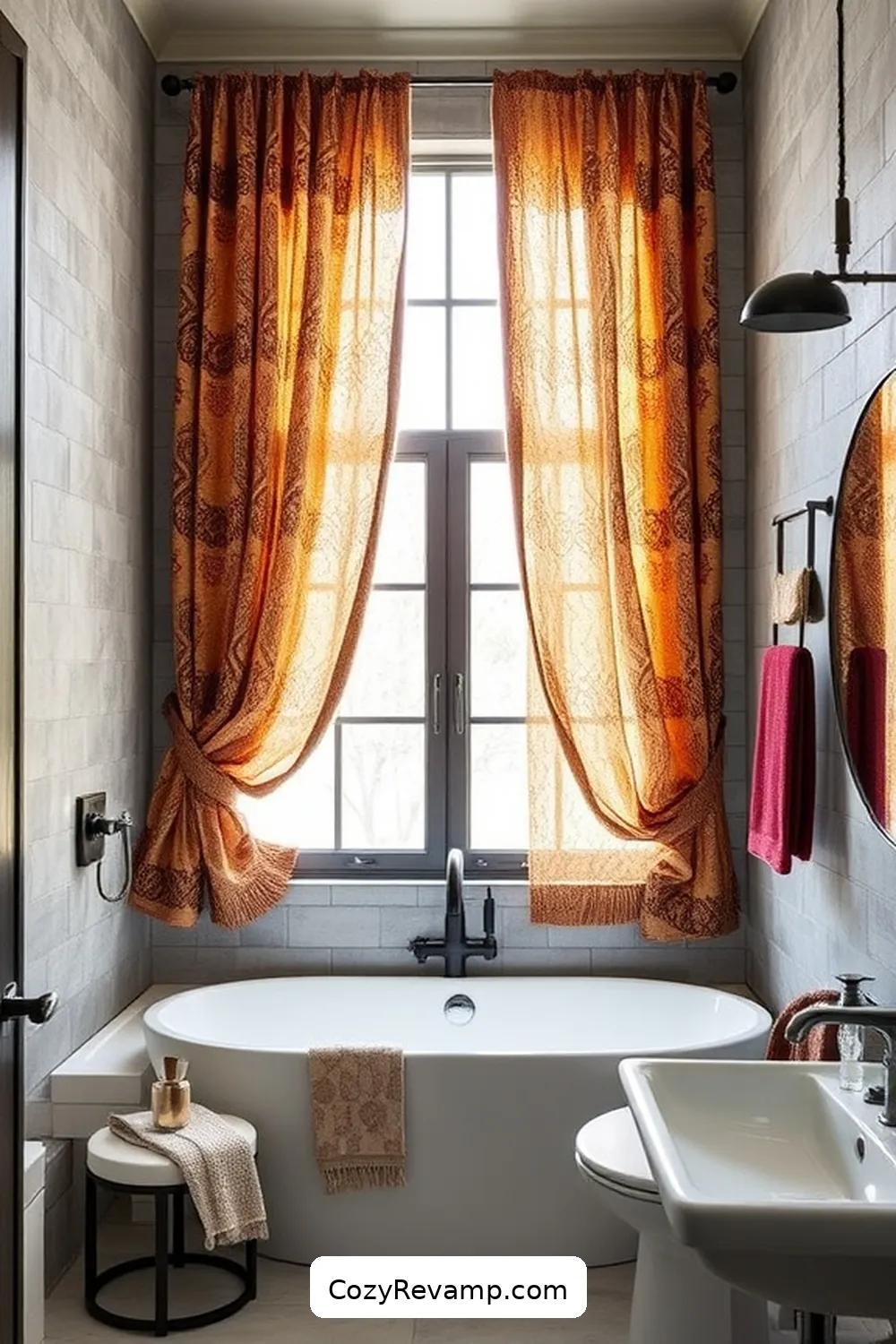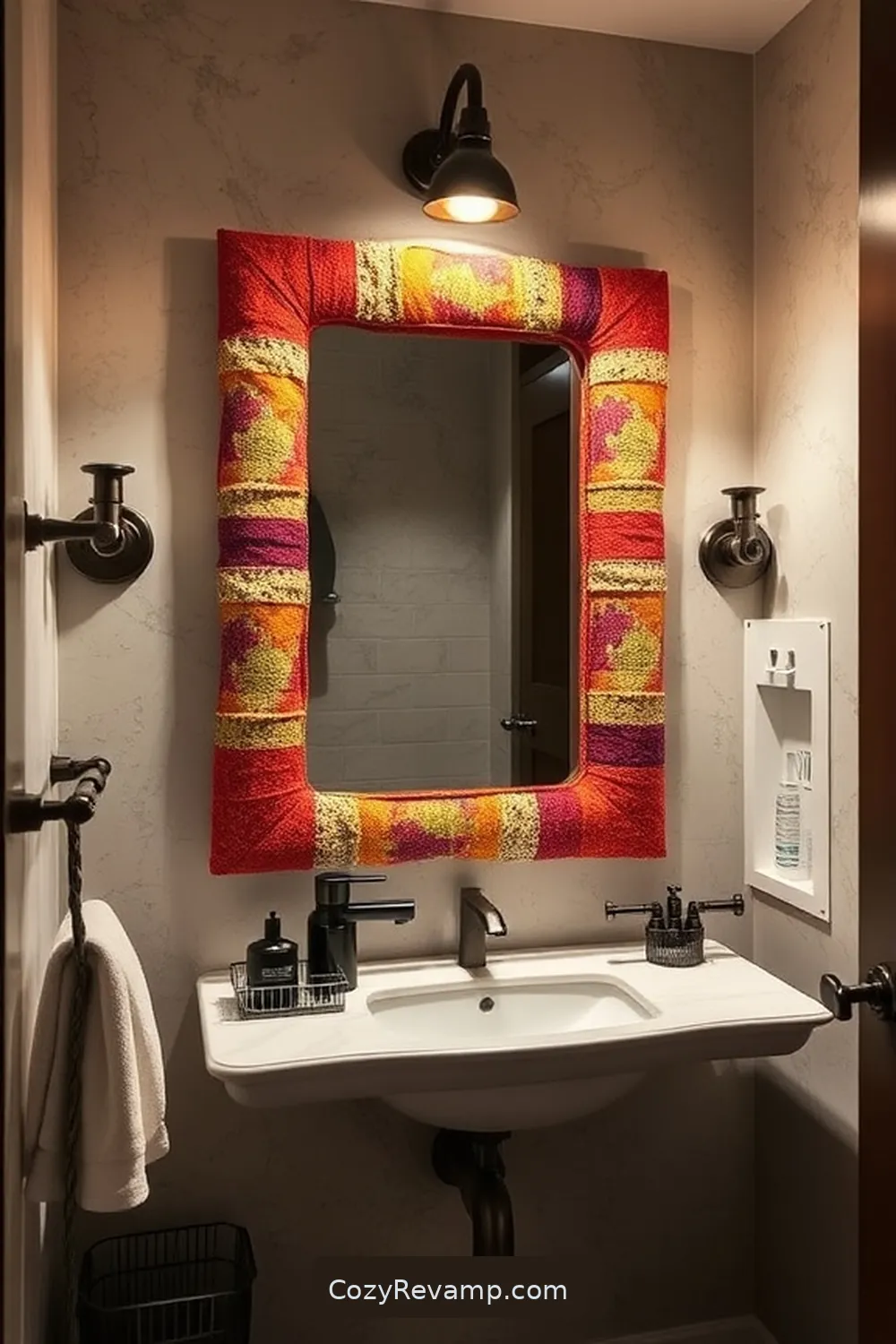I love how natural fibers can transform industrial hallways into warm, inviting spaces! Using jute runner rugs softens hard edges, while sisal wall hangings and cotton upholstered benches add texture and comfort. Seamlessly blend functionality with chic design through woven baskets and natural fiber coat hooks. Don’t forget about recycled cotton wall coverings to enhance acoustics. Explore the creative possibilities with hanging fiber décor and floor cushions, and you’ll discover even more stunning ideas for your space!
Jute Runner Rugs for Warmth

When I think about transforming an industrial hallway into a warm, inviting space, jute runner rugs instantly come to mind. Their natural texture and earthy tones bring an organic touch to stark concrete or metal surroundings.
I love how these rugs create a visual contrast, softening hard edges while adding a cozy, lived-in vibe. The fibers are durable yet gentle underfoot, making them perfect for high-traffic areas.
Plus, they’re eco-friendly, aligning with my passion for sustainable design. I often layer them with other textiles for added warmth and dimension, creating a welcoming path that draws people in.
Every time I see a jute runner, I’m reminded of the beauty that nature can bring into even the most industrial of settings.
Sisal Wall Hangings as Art

Sisal wall hangings instantly elevate an industrial hallway, transforming bare walls into enchanting focal points.
I love how these textured pieces bring warmth and character to cold, concrete spaces. Each wall hanging tells a story, showcasing intricate weaves and natural tones that blend beautifully with metal and wood elements.
The earthy hues of sisal add depth, creating a striking contrast against industrial surfaces. I’ve experimented with different sizes and shapes, layering them for a dynamic visual effect.
They catch the light in unique ways, casting shadows that dance across the wall. Incorporating sisal wall art not only enhances aesthetics but also invites a sense of tranquility, making the hallway feel more inviting and alive.
You’ll be amazed at the transformation!
Cotton Upholstered Benches

After enhancing the walls with sisal art, adding cotton upholstered benches can take your industrial hallway to the next level.
Imagine a sleek, minimalist bench that invites guests to sit and soak in the space. I love how the soft cotton fabric contrasts with the rawness of industrial materials like metal and concrete.
Choose bold patterns or muted tones to align with your aesthetic. The benches not only provide comfort but also serve as a canvas for showcasing vibrant colors or textures.
I’ve found that they effortlessly blend style and functionality, making the hallway feel welcoming and dynamic.
With every detail considered, cotton upholstered benches become a focal point, transforming your industrial space into a harmonious retreat.
Woven Baskets for Storage

Woven baskets can be a game-changer for storage in an industrial hallway. They blend functionality with style, offering a natural touch to the often stark industrial environment. I love how they come in various sizes and textures, making them perfect for anything from shoes to sports equipment.
Here’s a quick comparison of different basket types:
| Type | Size | Ideal Use |
|---|---|---|
| Large Woven Basket | 18″ x 18″ | Blankets and throws |
| Medium Seagrass | 12″ x 12″ | Shoes or toys |
| Small Rattan | 8″ x 8″ | Keys or small items |
With their versatility, woven baskets not only keep my space organized but also enhance the aesthetic appeal of the hallway. They’re a smart addition!
Natural Fiber Wall Panels

While exploring ways to enhance the industrial hallway, I discovered the striking appeal of natural fiber wall panels.
These panels not only bring warmth and texture but also create a unique focal point that complements the raw aesthetics of industrial design.
Here’s what I love about them:
- Sustainability: Made from renewable materials, they’re eco-friendly.
- Acoustic Benefits: They help absorb sound, making the space quieter.
- Versatile Designs: Available in various patterns and colors to match any décor.
- Durability: Resistant to wear and tear, perfect for high-traffic areas.
- Easy Installation: They can be mounted quickly, minimizing disruption during renovations.
Incorporating natural fiber wall panels transforms the hallway into a welcoming and stylish environment.
Recommended Items
Here are our recommended products and equipment to install—feel free to explore!
Jute or Sisal Pendant Lighting

Natural fiber wall panels set the stage for another enchanting element in industrial hallway design: jute or sisal pendant lighting.
I adore how these natural fibers can transform an ordinary space into an inviting retreat. The earthy tones of jute or sisal bring warmth and texture, effortlessly blending with the rawness of industrial aesthetics.
I often hang them at varying heights to create visual interest, casting soft, diffused light that enhances the hallway’s ambiance. Imagine the interplay of shadows dancing on the walls, highlighting the natural fiber’s intricate weave.
It’s not just about illumination; it’s about creating a mood. Each pendant becomes a conversation starter, bridging the gap between rustic charm and modern sophistication.
You’ll be amazed at the impact!
Textured Natural Fiber Curtains

In my experience, adding textured natural fiber curtains can dramatically elevate the design of an industrial hallway.
These curtains not only soften the raw edges of industrial materials but also create an inviting atmosphere.
Here’s why I love using them:
- Warmth: They bring a cozy touch to cold, hard spaces.
- Versatility: Available in various fiber types, they can match any decor.
- Light Control: They filter light beautifully while maintaining privacy.
- Eco-Friendly: Most natural fibers are sustainable and biodegradable.
- Acoustic Benefits: They help dampen noise, making the space more serene.
Incorporating these curtains into your hallway design can transform it from stark to stylish, enhancing both aesthetics and functionality.
Eco-Friendly Door Mats

Adding eco-friendly door mats to your industrial hallway can be a game changer. They not only enhance the aesthetic appeal but also promote sustainability. I love how these mats, made from natural fibers like jute or coir, add texture while reducing our carbon footprint. Plus, they’re durable and perfect for high-traffic areas!
Here’s a quick comparison of materials:
| Material | Benefits | Sustainability |
|---|---|---|
| Jute | Biodegradable, strong | Grows quickly |
| Coir | Water-resistant, abrasive | Harvested sustainably |
| Hemp | Mold-resistant, durable | Low water usage |
| Cotton | Soft, versatile | Organic options available |
Incorporating these mats can truly elevate your space while keeping it eco-conscious!
Task Overview: Natural Fiber Decor Ideas
Cotton Throw Pillows

Cotton throw pillows can transform the vibe of an industrial hallway, offering a cozy contrast to the sleek, hard surfaces typical of such spaces.
I love how these pillows can infuse warmth and personal style into an otherwise stark environment.
Cotton throw pillows effortlessly add warmth and a personal touch to stark industrial spaces.
Here are some creative ideas to elevate your hallway:
- Bold Patterns: Choose vibrant prints to make a statement.
- Layering Textures: Combine cotton with other natural fibers for depth.
- Seasonal Themes: Swap out pillows to reflect the seasons.
- Color Coordination: Match pillows with existing decor for a cohesive look.
- Functional Comfort: Use them for seating areas or as back support.
With these elements, your industrial hallway can radiate both comfort and style!
Sisal Stair Treads

While traversing an industrial hallway, the right sisal stair treads can add both safety and style to your space.
I love how these natural fibers bring a touch of warmth to the often cold, hard surfaces of industrial designs. The textured surface of sisal offers excellent grip, reducing slip hazards and providing peace of mind as I move up and down the stairs.
Plus, the earthy tones blend seamlessly with metal and concrete, creating a harmonious contrast that feels both modern and inviting. Customizing the size and shape of these treads lets me tailor them to fit my unique space, enhancing not just functionality but also aesthetic appeal.
Sisal stair treads truly transform a simple staircase into a stunning focal point.
Hand-Woven Area Rugs

After enhancing the staircase with sisal treads, I find that hand-woven area rugs can further elevate the ambiance of an industrial hallway.
These rugs add warmth and texture, creating an inviting contrast to the raw elements of concrete and metal. Their unique patterns and colors can transform an otherwise stark space into a cozy retreat.
- They absorb sound, reducing echoes in open areas.
- Each rug tells a story, showcasing craftsmanship and tradition.
- Eco-friendly materials guarantee sustainability in design.
- They provide comfort underfoot, making the space more welcoming.
- Versatile styles can complement any industrial aesthetic.
Incorporating hand-woven area rugs is an innovative way to enhance both comfort and style in your industrial hallway.
Macramé Plant Hangers

As I explore ways to bring life into the industrial hallway, macramé plant hangers emerge as a perfect choice for infusing greenery and artistry.
These handcrafted pieces not only showcase the beauty of natural fibers but also offer an elegant way to display plants without occupying precious floor space.
I love the way they can soften the harsh lines of industrial design while adding texture and warmth.
Jute or Sisal Wall Sconces

Five stunning jute or sisal wall sconces can transform an industrial hallway into a warm and inviting space.
These natural fiber fixtures not only add texture but also create a cozy ambiance that contrasts beautifully with raw materials like metal and concrete.
- Eco-friendly charm: Harness the sustainable appeal of natural fibers.
- Versatile styles: Choose from rustic, modern, or bohemian designs.
- Soft lighting: Diffuse light gently to enhance the atmosphere.
- Textural interest: Introduce tactile elements that draw the eye.
- Easy installation: Hang them quickly for an instant upgrade.
I love how these sconces bring life to an otherwise stark environment, making every passage feel like a unique experience.
Trust me, they’re a game-changer!
Natural Fiber Table Accents

While exploring ways to enhance an industrial hallway, I discovered that natural fiber table accents can add a touch of warmth and character. From jute runners to sisal coasters, these elements seamlessly blend rustic charm with modern aesthetics. They provide not just functionality but also an inviting atmosphere.
Here’s a quick overview of some stunning options:
| Accent Type | Benefits |
|---|---|
| Jute Table Runner | Softens hard surfaces and adds texture |
| Sisal Coasters | Durable and eco-friendly, great for spills |
| Cotton Napkins | Versatile and easy to clean, adds color |
Incorporating these accents invites a natural elegance into the space, making it feel more welcoming and stylish. Trust me, it’s a simple yet impactful upgrade!
Woven Wall Organizers

Woven wall organizers transform empty vertical spaces into functional art, offering both storage solutions and aesthetic appeal in an industrial hallway.
Woven wall organizers turn empty walls into stunning storage solutions, adding both style and practicality to any industrial hallway.
I love how these pieces can blend seamlessly with raw materials like metal and concrete, creating an inviting atmosphere. They not only declutter but also bring warmth and texture to the space.
Here are some of my favorite features of woven wall organizers:
- Versatile designs: From geometric patterns to boho chic styles.
- Natural fibers: Eco-friendly materials like jute and hemp that breathe.
- Easy customization: Personalize with colors and sizes to fit your vibe.
- Multi-functional: Perfect for holding everything from keys to plants.
- Statement pieces: Elevate your hallway’s character effortlessly.
With a woven wall organizer, you can elevate both style and functionality!
Sustainable Artwork Frames

As I explore the intersection of design and sustainability, I’m continually inspired by sustainable artwork frames that not only showcase creativity but also honor our planet. Using materials like reclaimed wood or bamboo, these frames add a unique touch to any space, particularly in industrial hallways. They tell stories of craftsmanship and eco-consciousness.
Here’s a quick comparison of different sustainable frame options:
| Material | Benefits |
|---|---|
| Reclaimed Wood | Unique textures, eco-friendly |
| Bamboo | Fast-growing, lightweight |
| Hemp | Durable, natural look |
| Cork | Renewable, insulating |
Incorporating these frames into your design isn’t just about aesthetics; it’s a meaningful choice that aligns with a sustainable lifestyle. Let’s embrace creativity while caring for our Earth!
Jute or Cotton Cushions
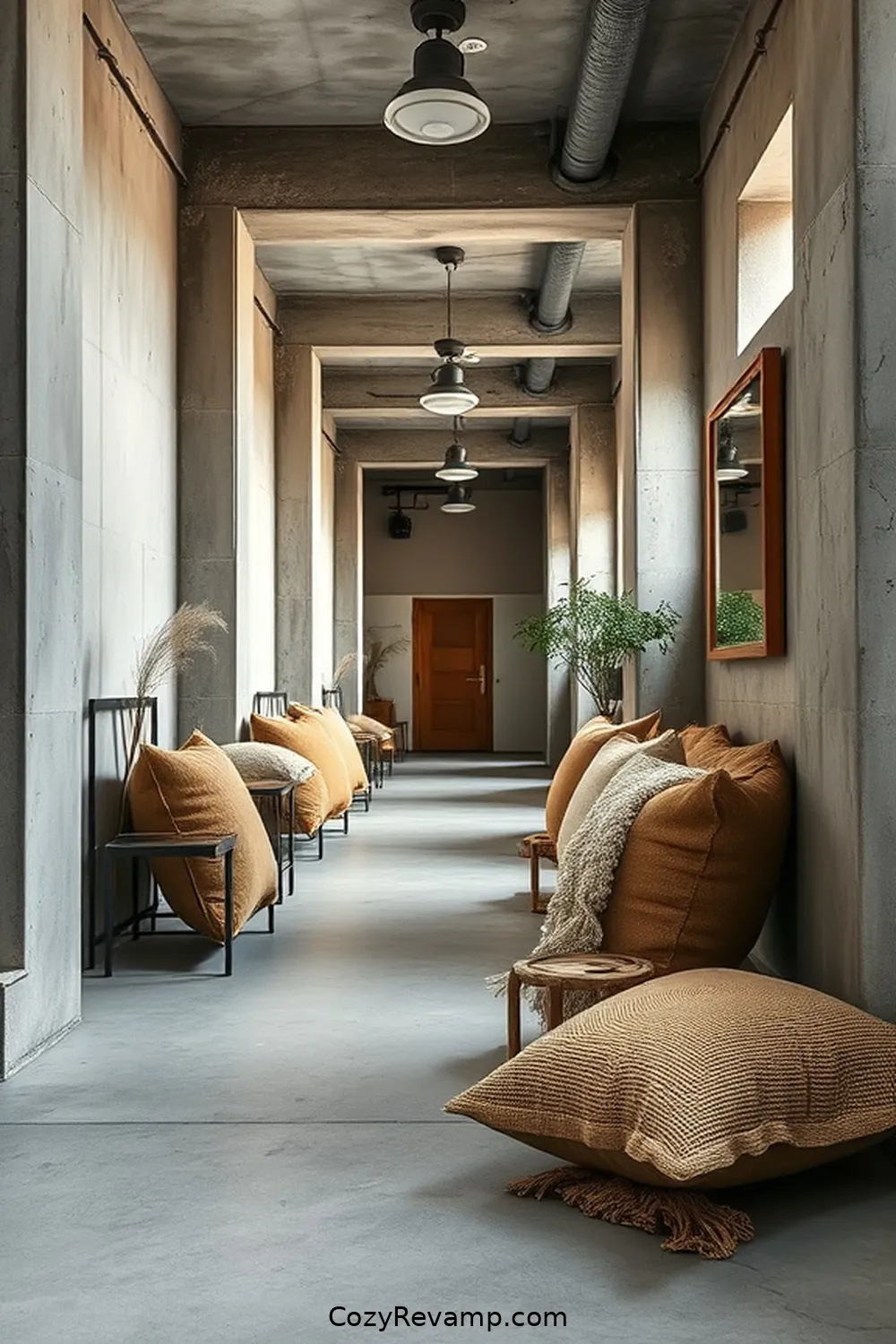
Cushions crafted from jute or cotton can transform an industrial hallway into a cozy retreat, blending comfort with eco-consciousness.
I love how these natural fibers add warmth and texture, softening the often stark lines of industrial design.
Here are some stunning ways to incorporate them:
Discover creative ideas to seamlessly blend jute and cotton cushions into your space for added warmth and style.
- Layered Textures: Mix and match jute and cotton cushions for a dynamic look.
- Bold Patterns: Choose cushions with geometric designs to enhance visual interest.
- Earthy Tones: Opt for neutral colors that harmonize with raw materials like metal and wood.
- Functional Seating: Use them to create inviting nooks for relaxation or conversation.
- Sustainable Choice: Embrace eco-friendly materials that promote sustainability.
Sisal Floor Cushions

Sisal floor cushions offer a unique blend of durability and natural beauty, making them a perfect addition to any industrial hallway. I love how they effortlessly combine functionality with style.
The rugged texture of sisal brings a warm, earthy element that contrasts beautifully with sleek metal and concrete surfaces. Plus, they’re incredibly resilient, standing up to heavy foot traffic while maintaining their shape and charm.
These cushions can serve multiple purposes—from providing a cozy seating option to creating a soft landing for those unexpected moments.
I’ve found that their neutral tones blend seamlessly with various color palettes, allowing for creativity in design. Incorporating sisal floor cushions into your space not only enhances comfort but also elevates the overall aesthetic of the hallway.
Hanging Fiber Wall Décor

Incorporating hanging fiber wall décor adds another layer of warmth and texture to the industrial hallway, complementing the sisal floor cushions beautifully.
I can’t help but admire how these natural fibers bring life to stark walls, creating a cozy yet sophisticated ambiance.
Here are some stunning ideas to inspire you:
- Woven wall hangings for an artisanal touch
- Macramé pieces that add intricate details
- Fiber art panels showcasing abstract designs
- Natural fiber tapestries that evoke a sense of nature
- Hanging baskets filled with greenery for a fresh vibe
Each piece tells a story and transforms the space, making it feel inviting.
Embracing these elements truly elevates the industrial aesthetic, don’t you think?
Natural Fiber Coat Hooks

When designing an industrial hallway, the right coat hooks can make all the difference, and natural fiber options are a fantastic choice. I love how these hooks blend functionality with an organic aesthetic.
Natural fiber coat hooks beautifully combine functionality and organic appeal, enhancing the industrial hallway’s aesthetic.
Picture sturdy hemp ropes twisted into unique shapes or jute fibers woven into striking designs. These materials not only add texture but also evoke a sense of warmth against the cold, raw elements of industrial decor.
I’ve found that natural fiber hooks can serve as conversation starters, showcasing craftsmanship and sustainability. They hold coats and bags securely while contributing to an eco-friendly ambiance.
Using them transforms an ordinary hallway into a welcoming space that tells a story, merging nature with modern design seamlessly.
Recycled Cotton Fabric Wall Coverings

Recycled cotton fabric wall coverings breathe new life into industrial hallways, transforming stark spaces into vibrant showcases of sustainability.
I’ve seen firsthand how these textiles can soften hard edges, creating a warm atmosphere that invites people in. The unique textures and colors add character without overwhelming the design.
Here are a few reasons to contemplate recycled cotton fabric wall coverings:
- Eco-Friendly: Made from post-consumer waste, reducing landfill impact.
- Sound Absorption: Helps dampen noise, improving acoustic comfort.
- Versatile Designs: Available in a variety of patterns and colors.
- Easy Maintenance: Durable and washable, perfect for high-traffic areas.
- Creative Expression: Allows for personal touches in a professional space.
Incorporating these coverings can truly elevate your hallway design!
































